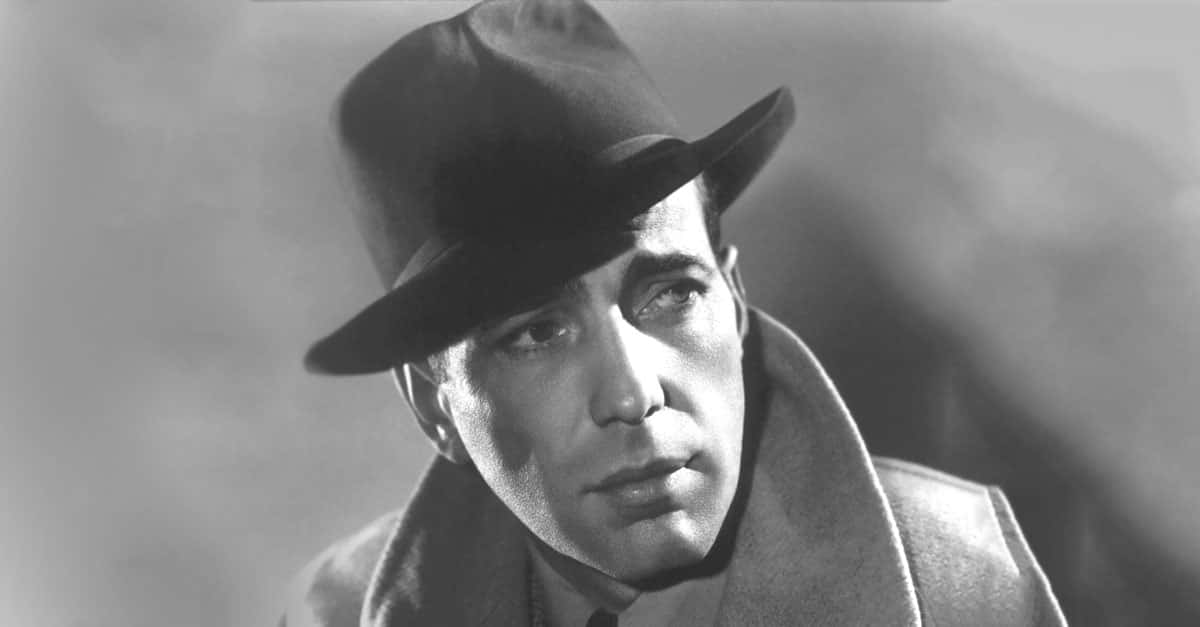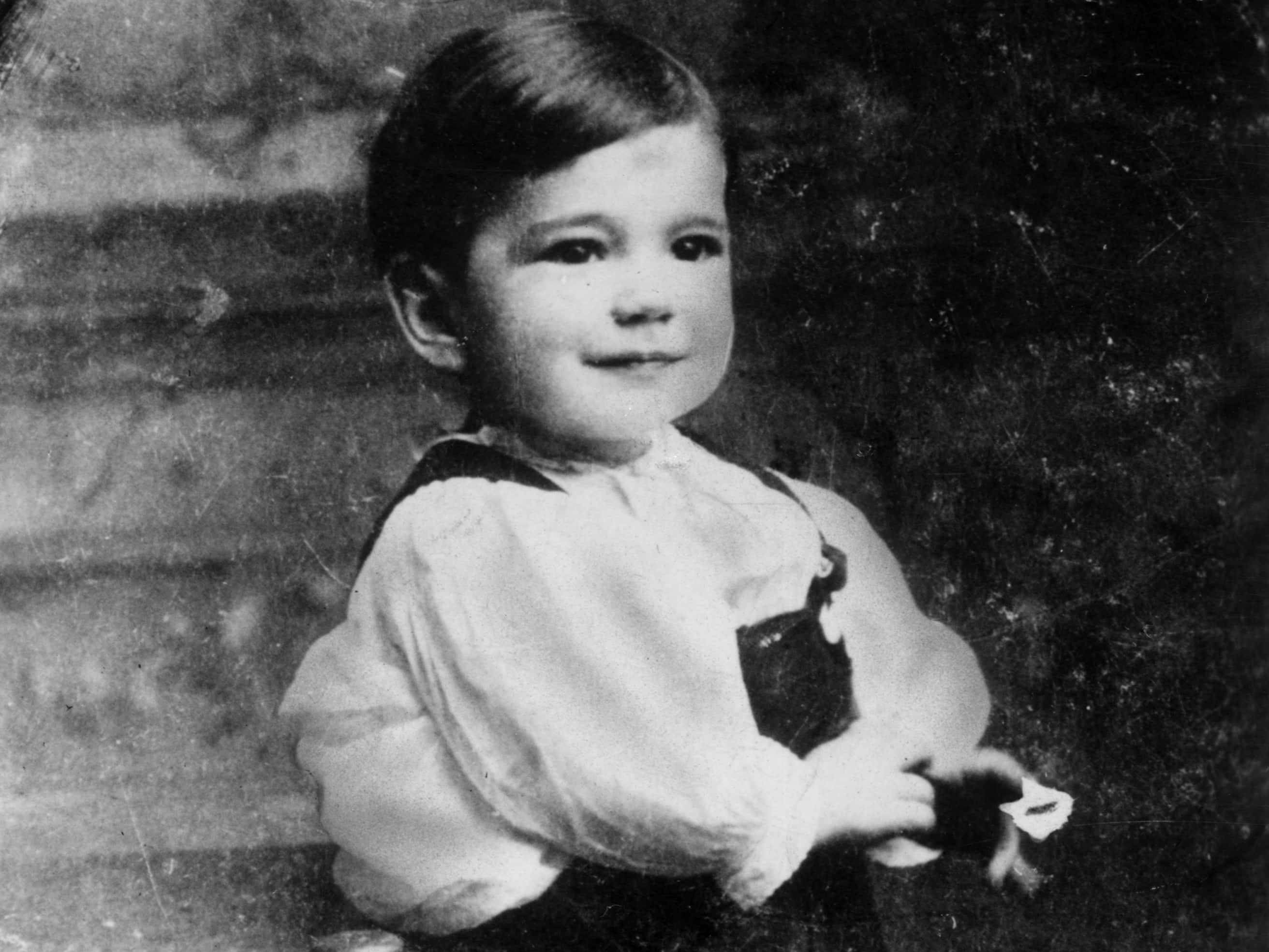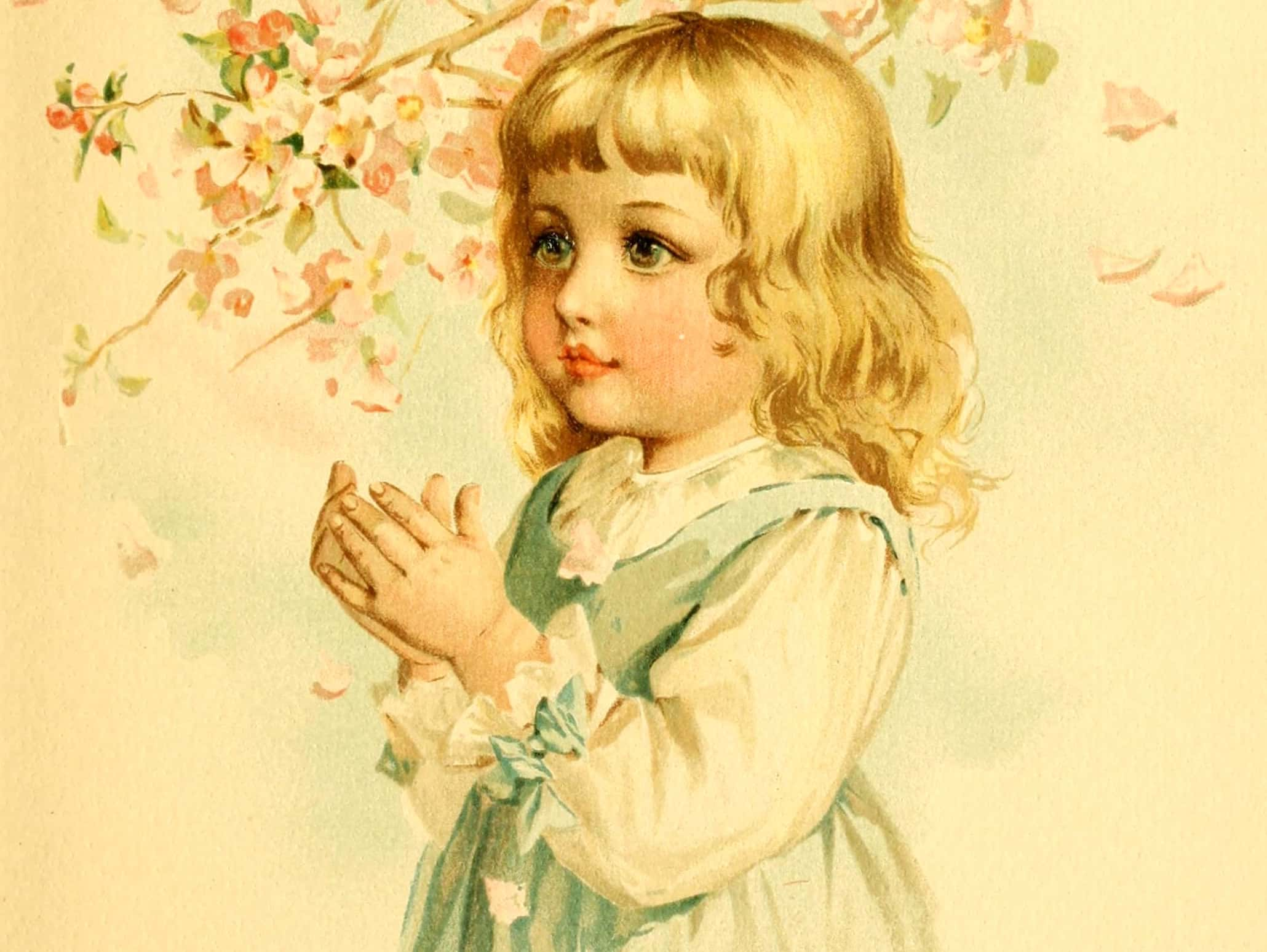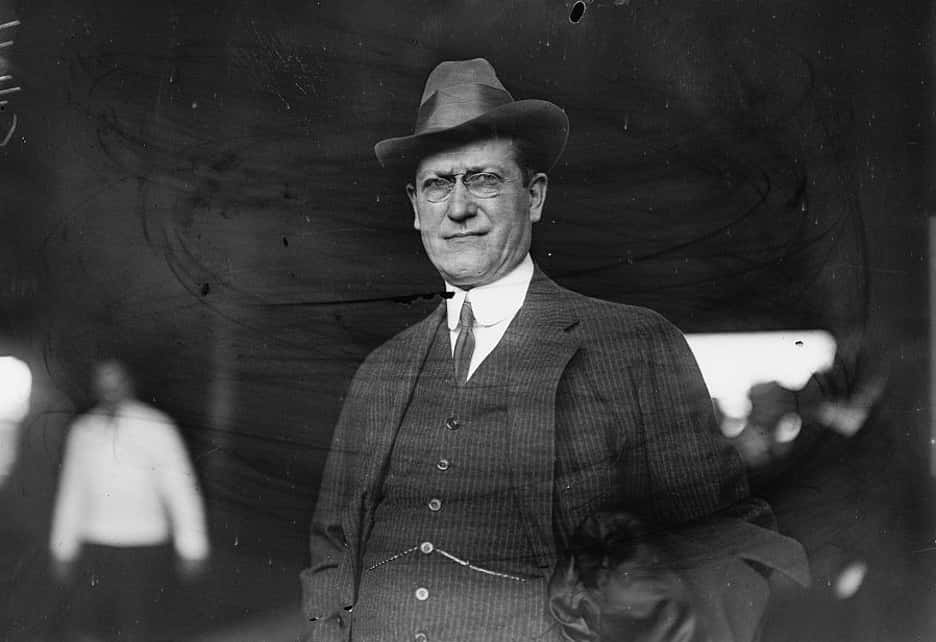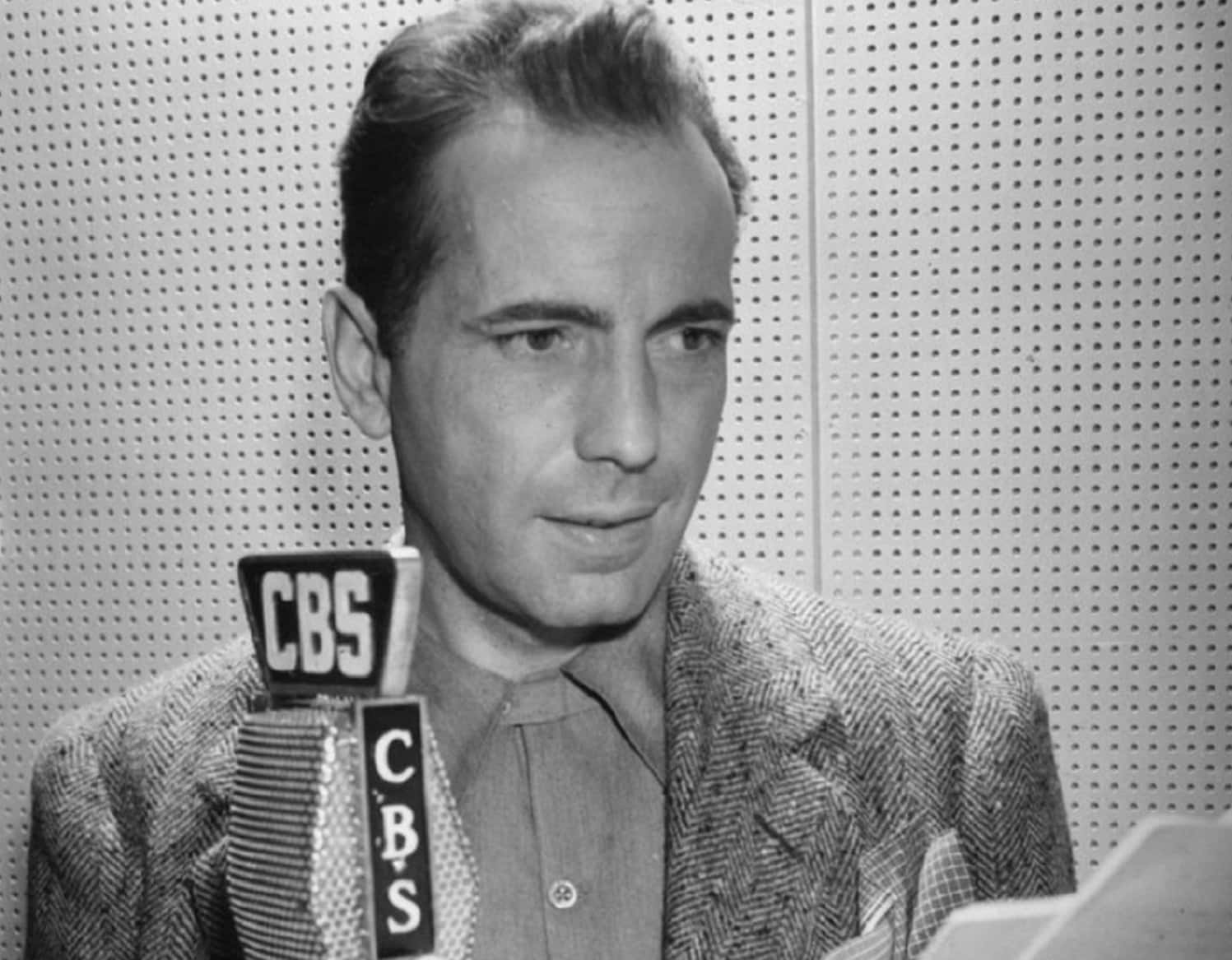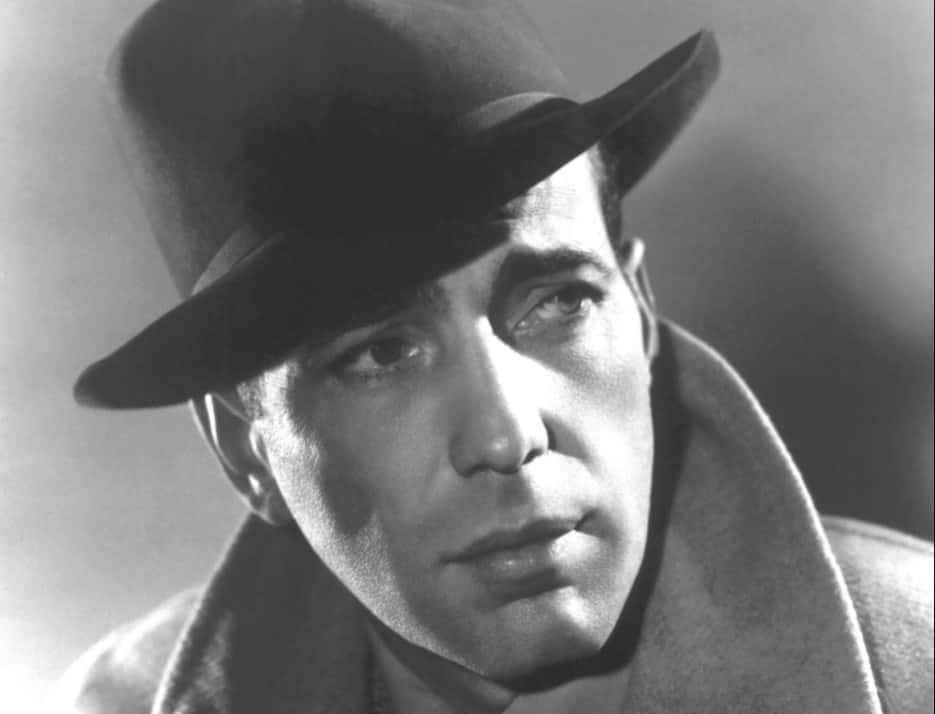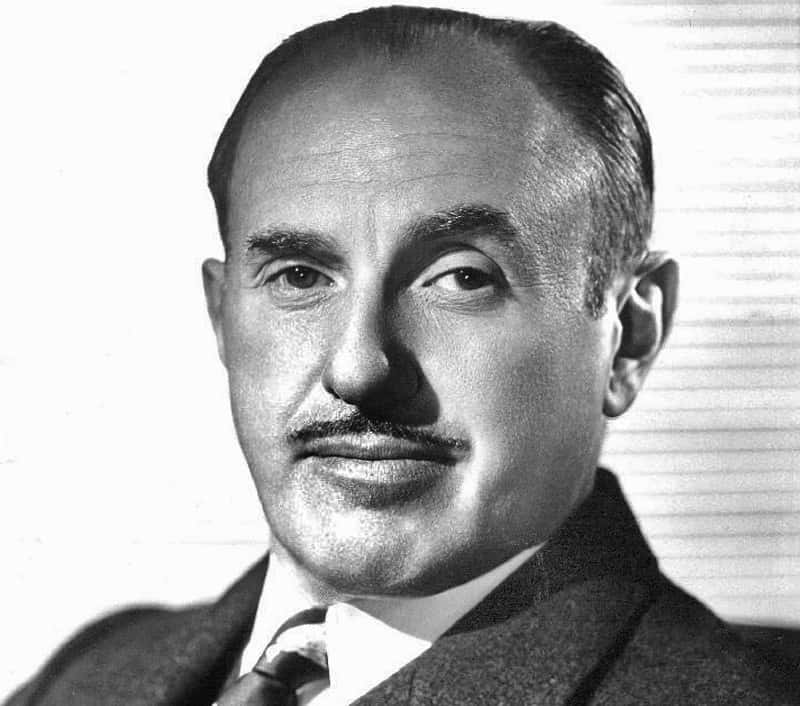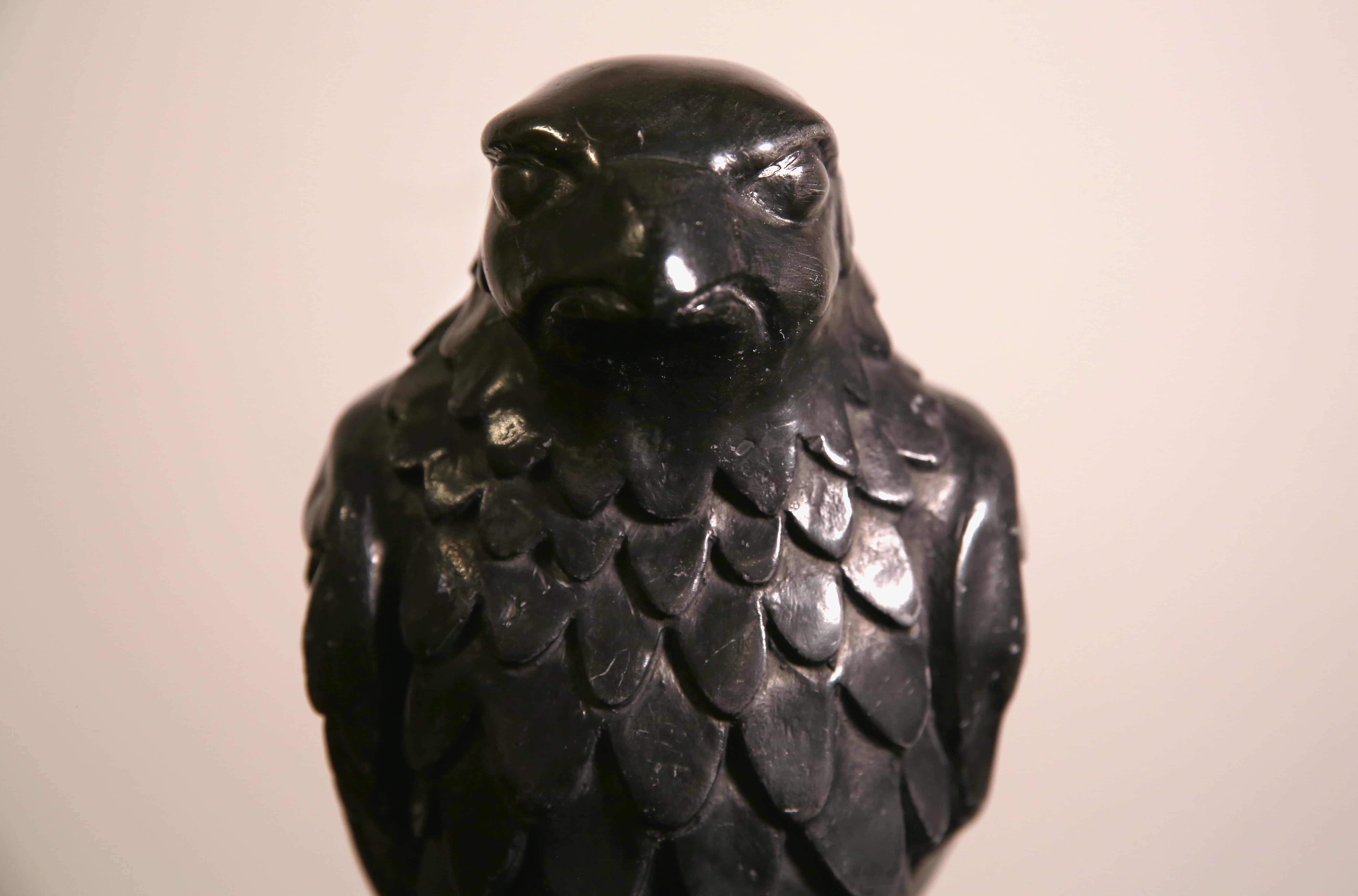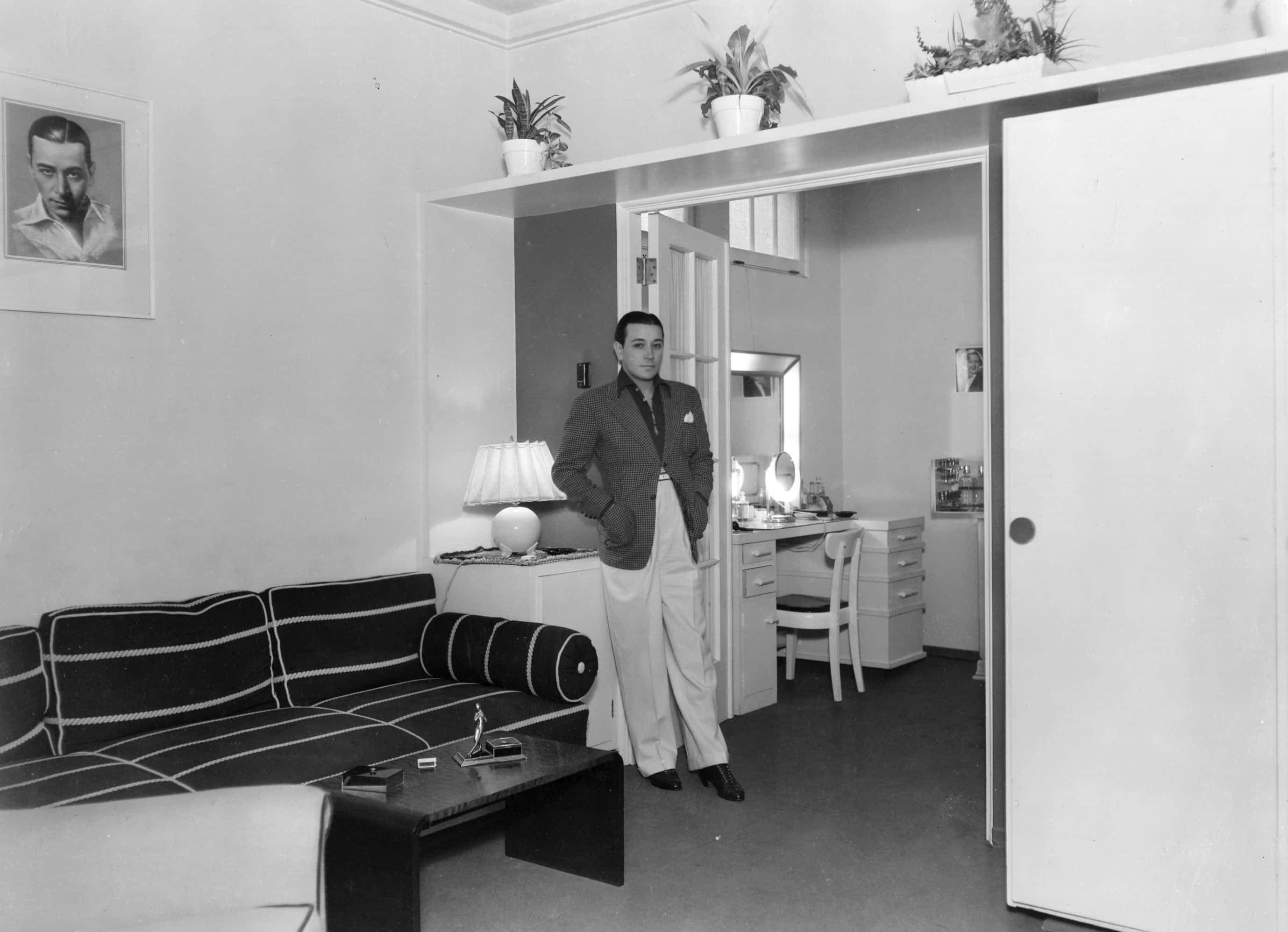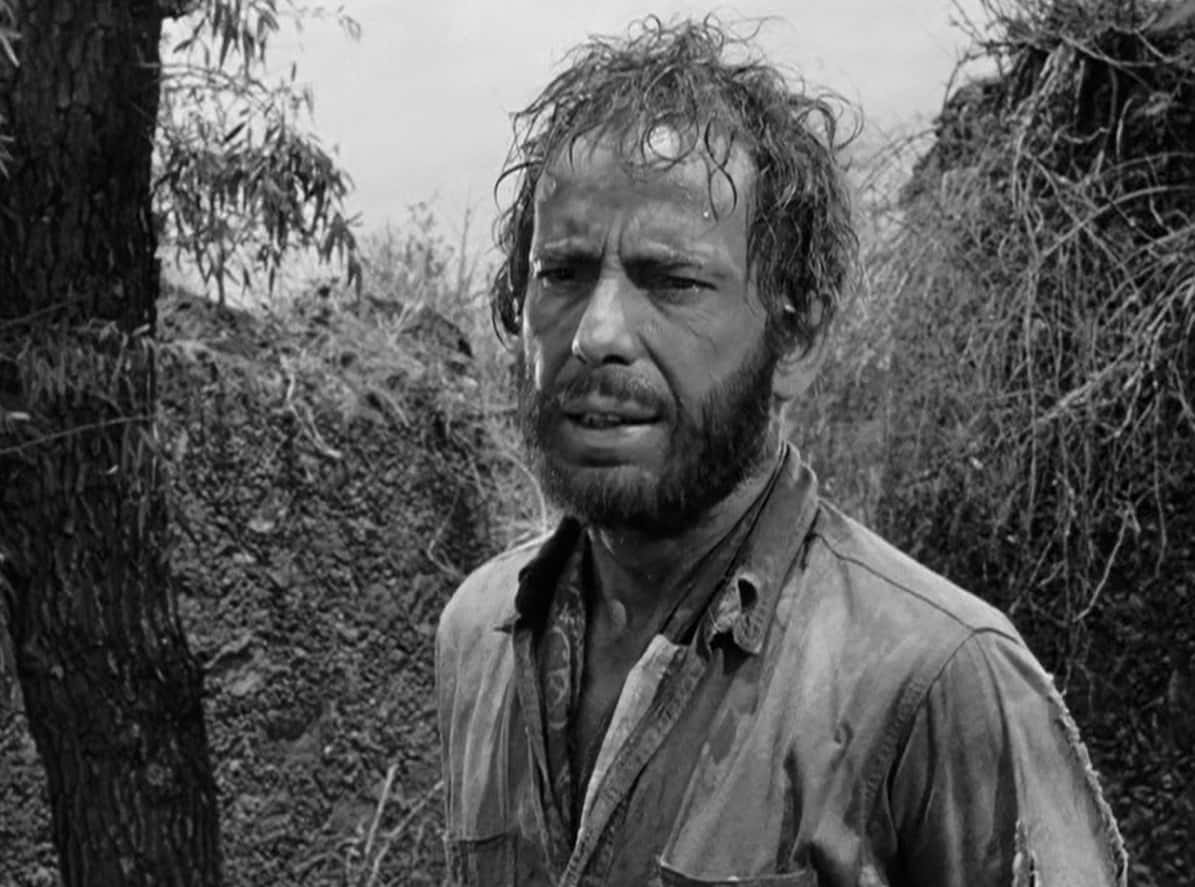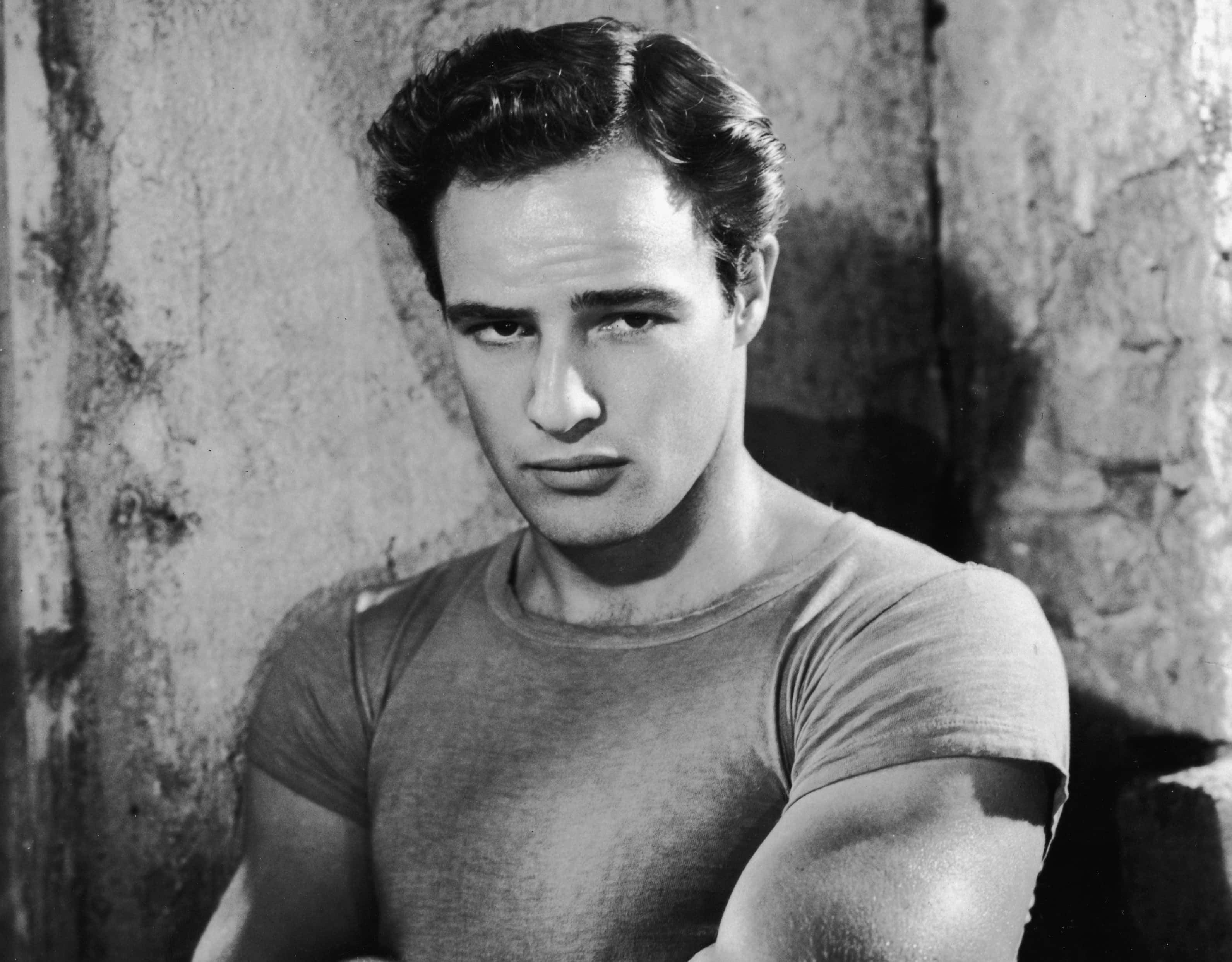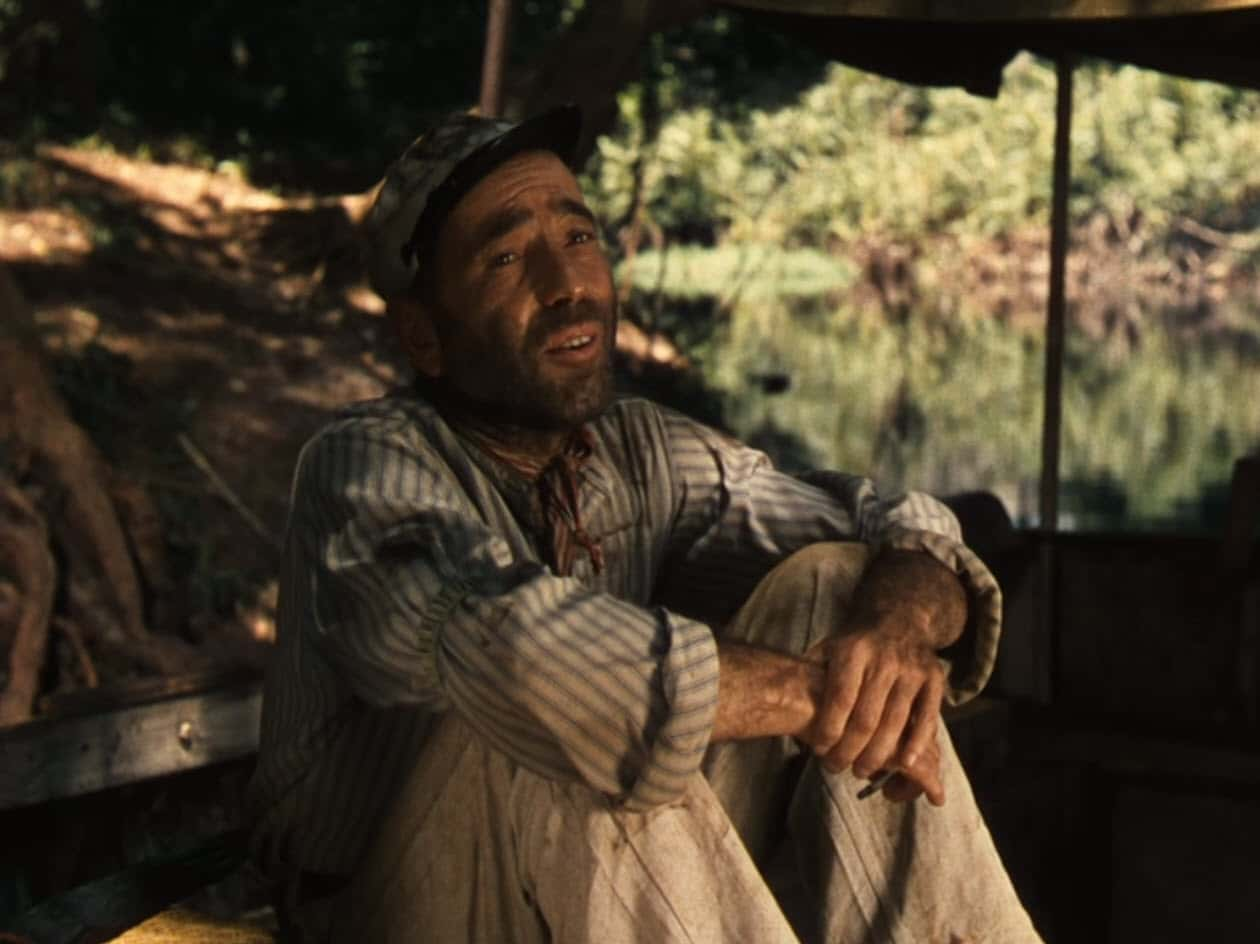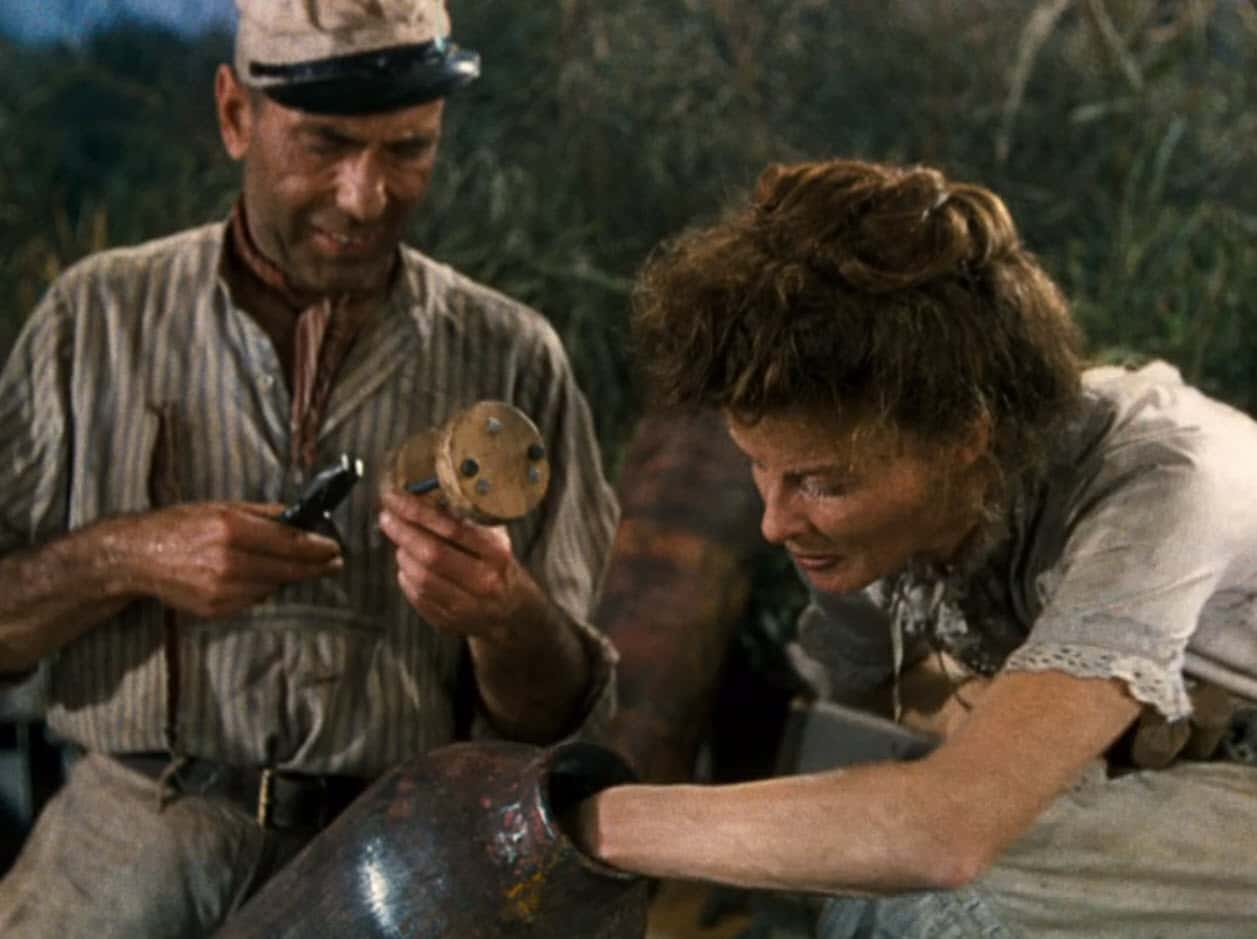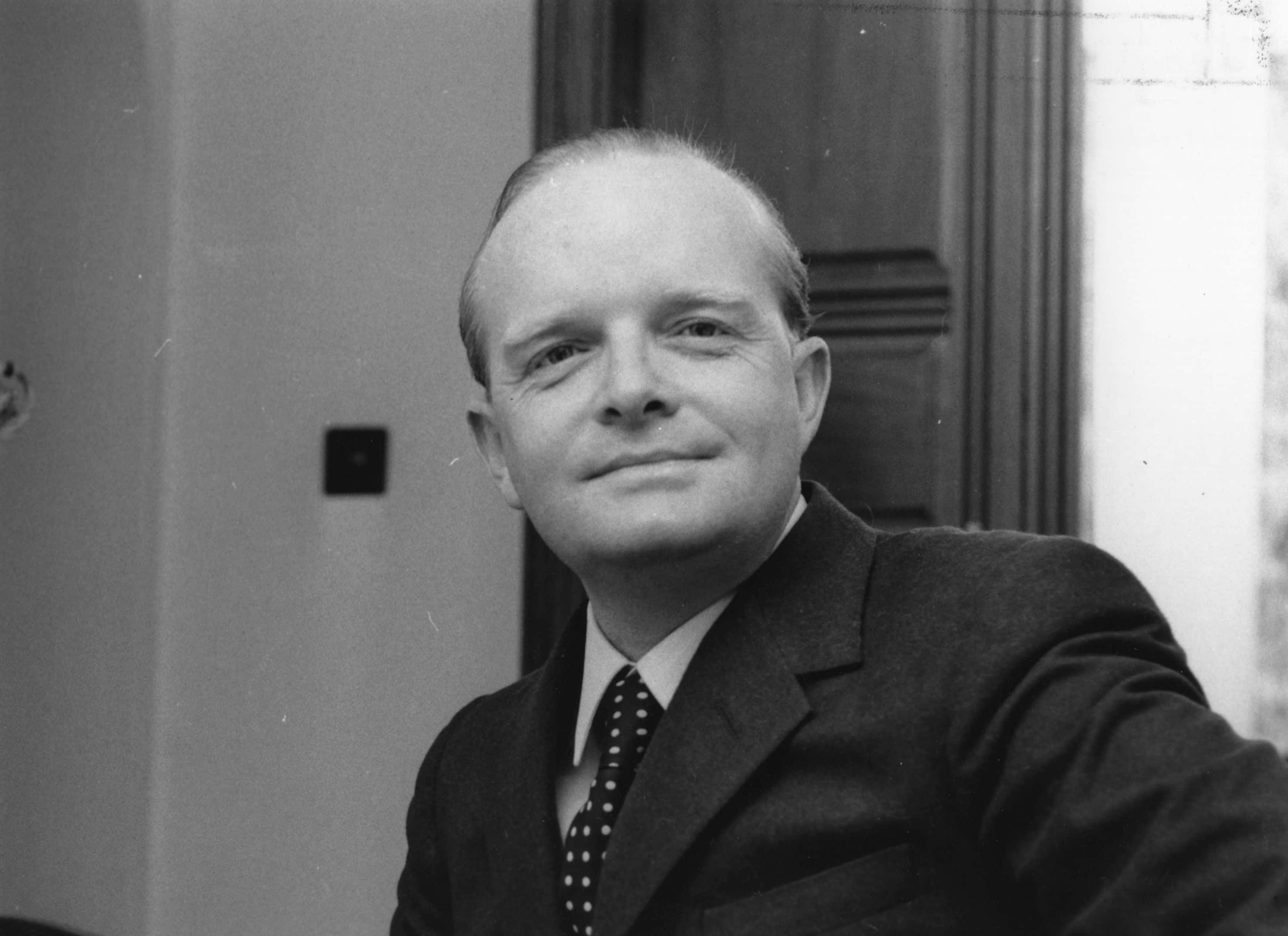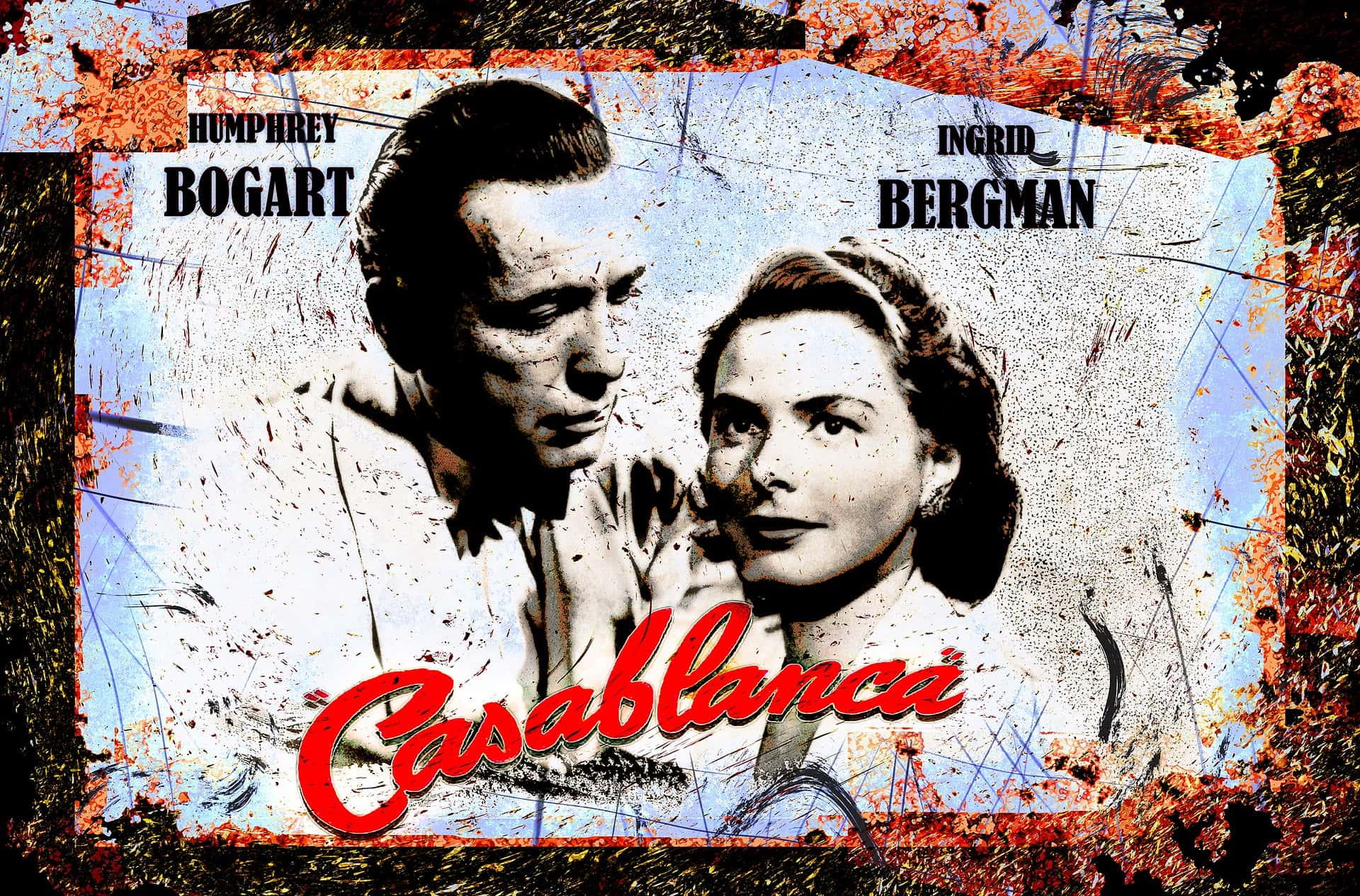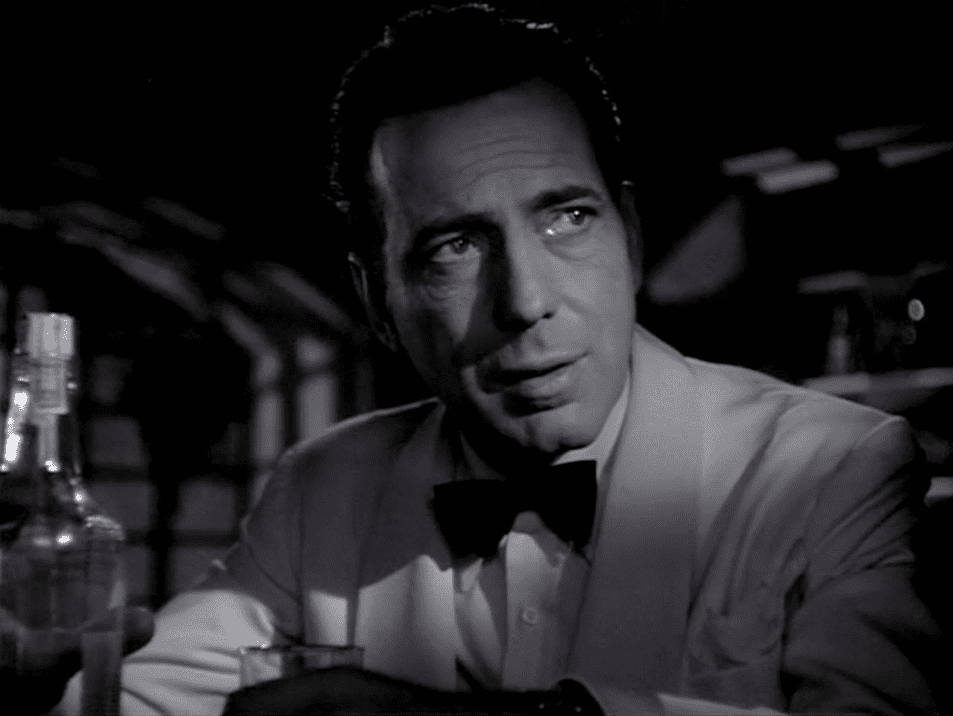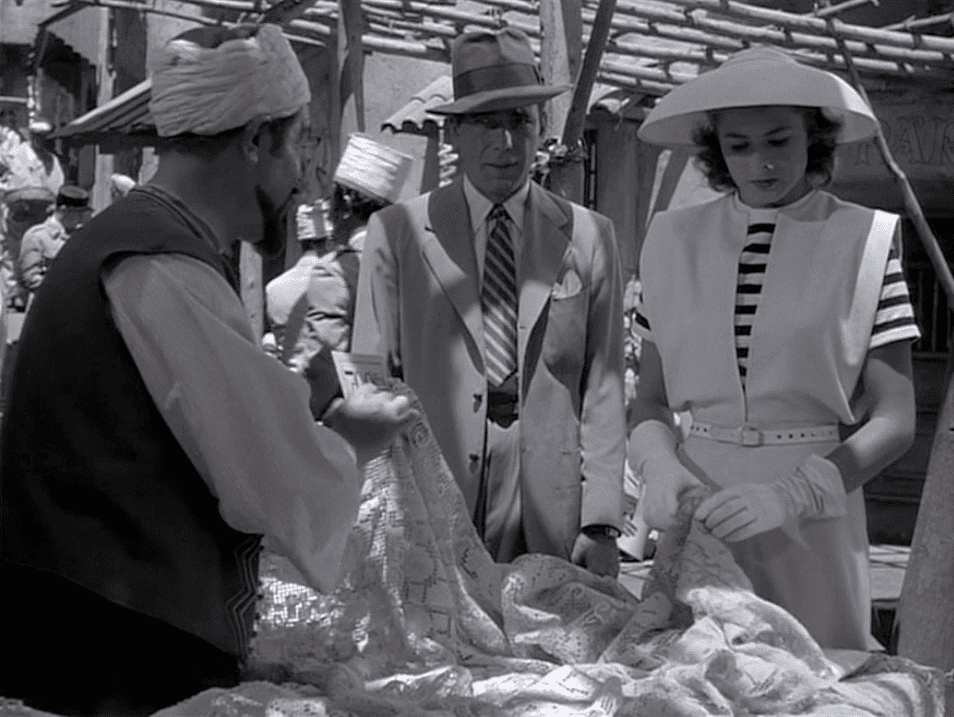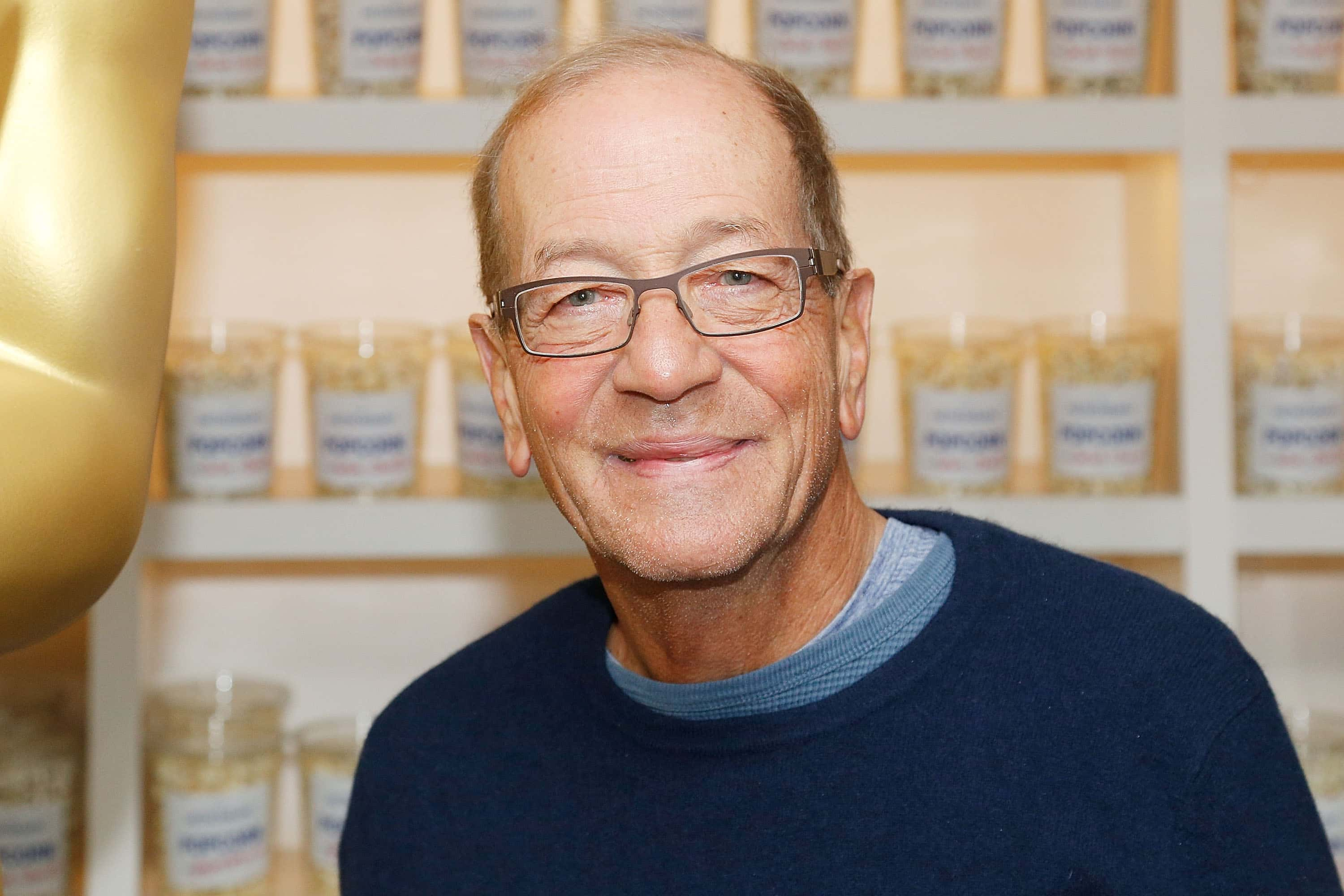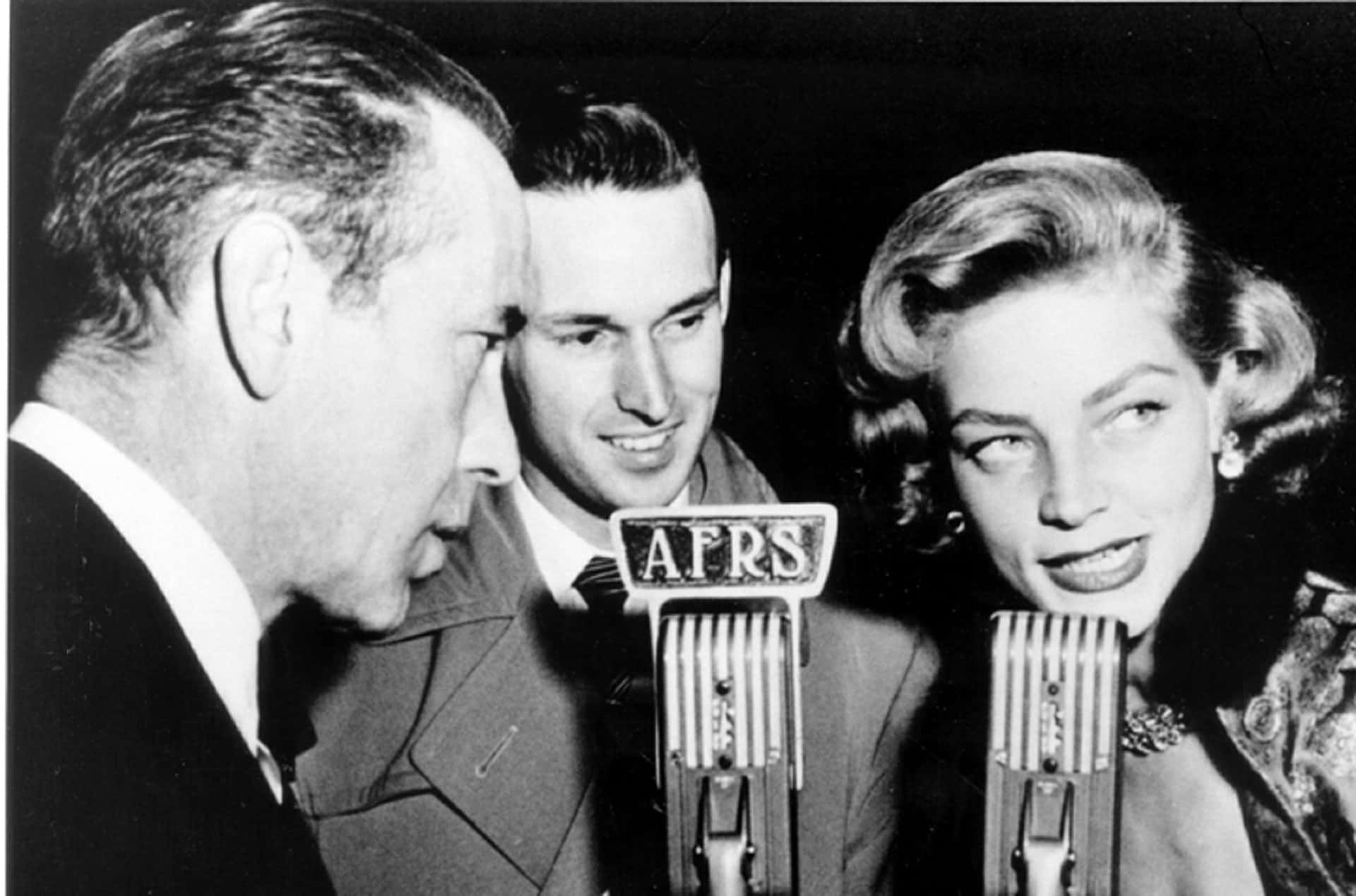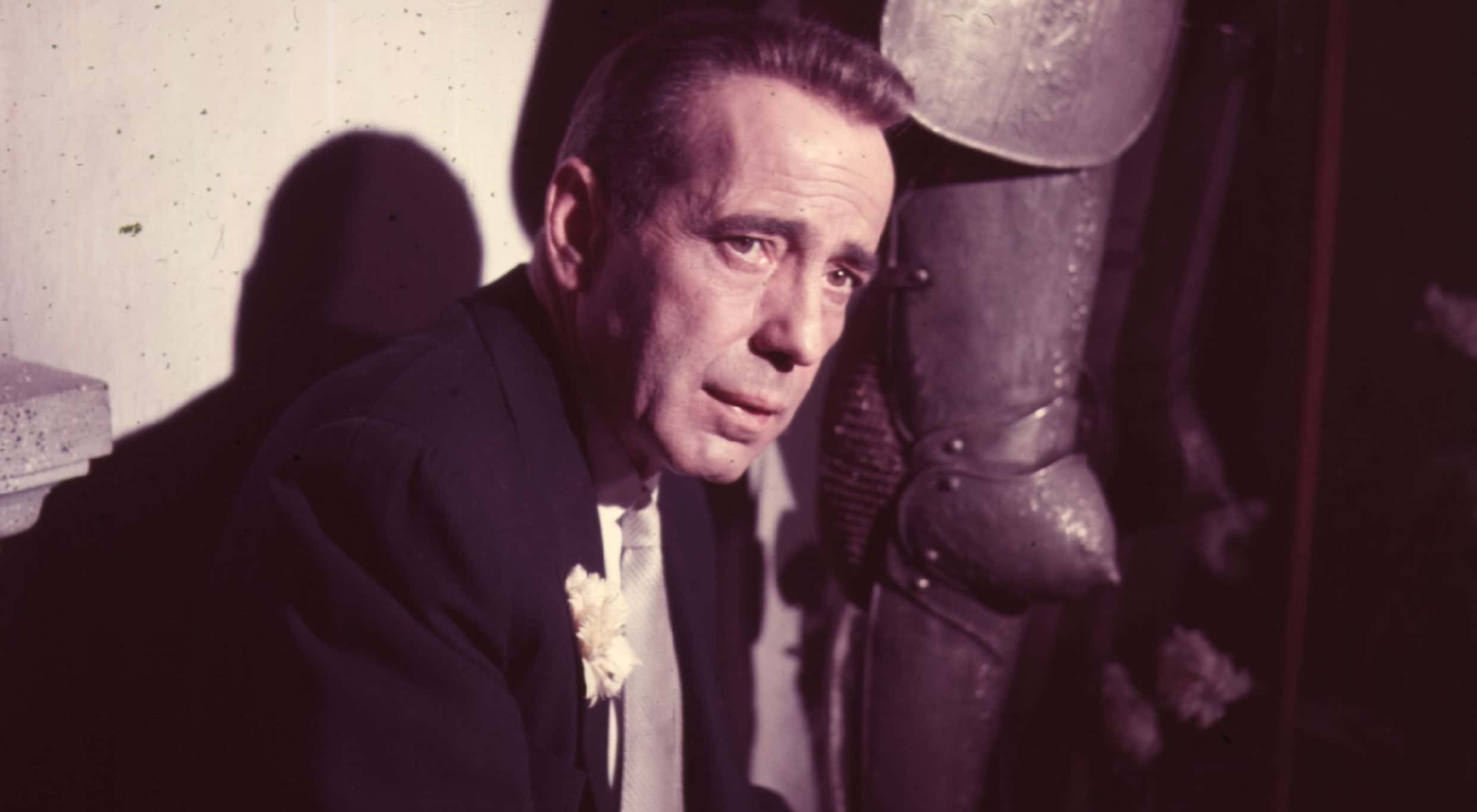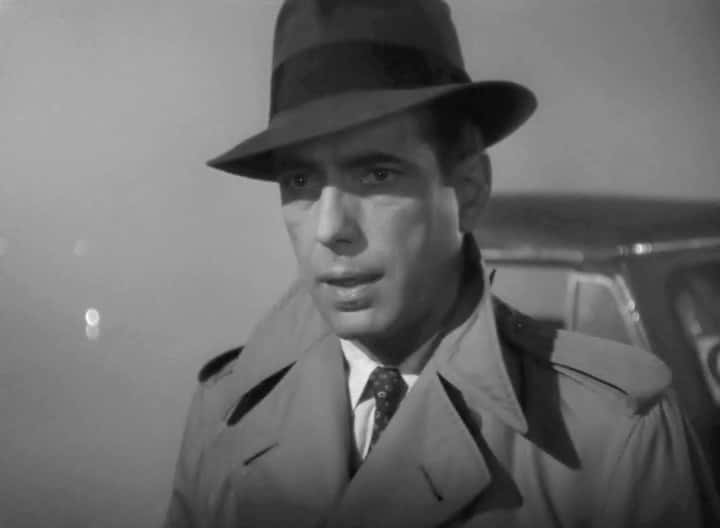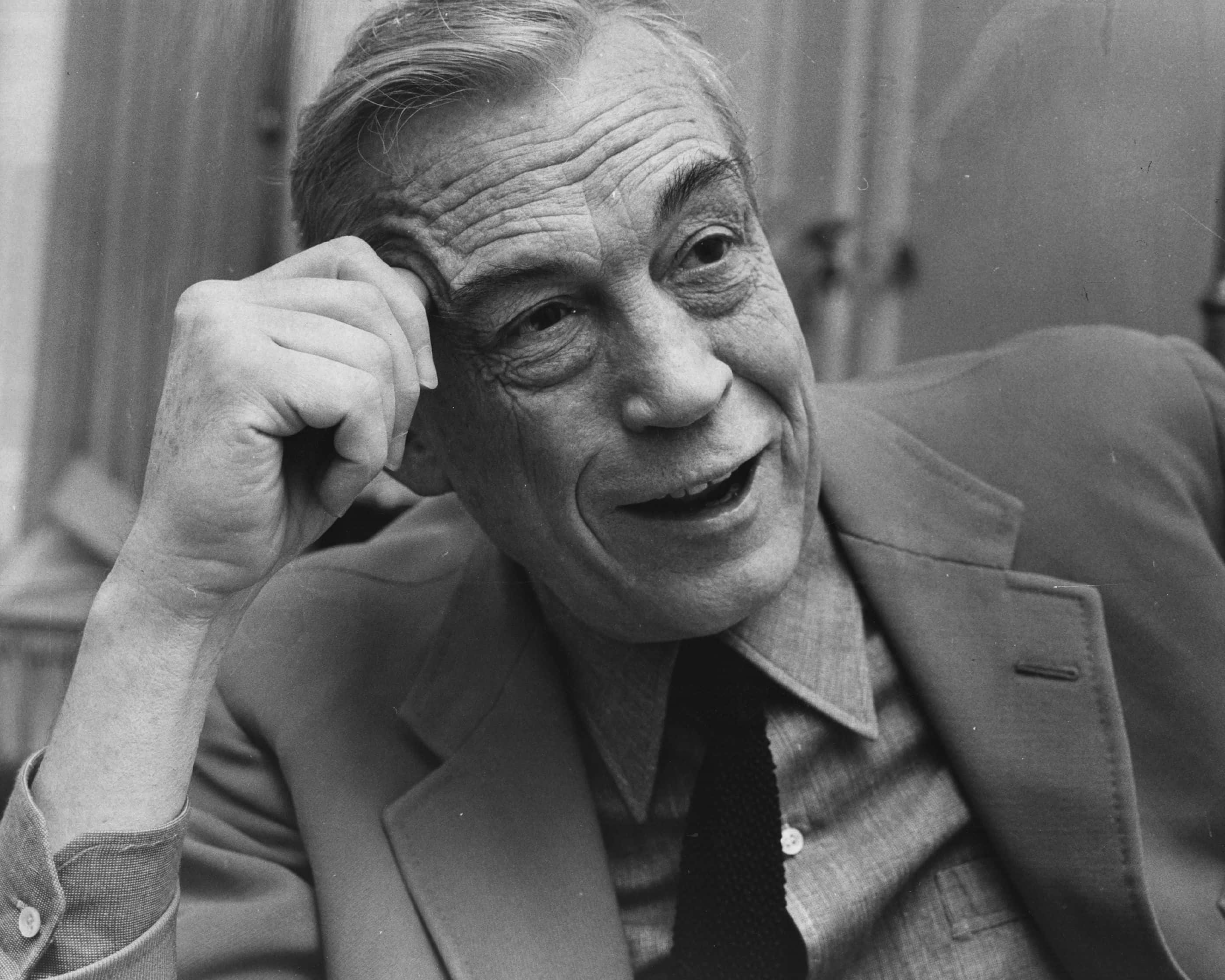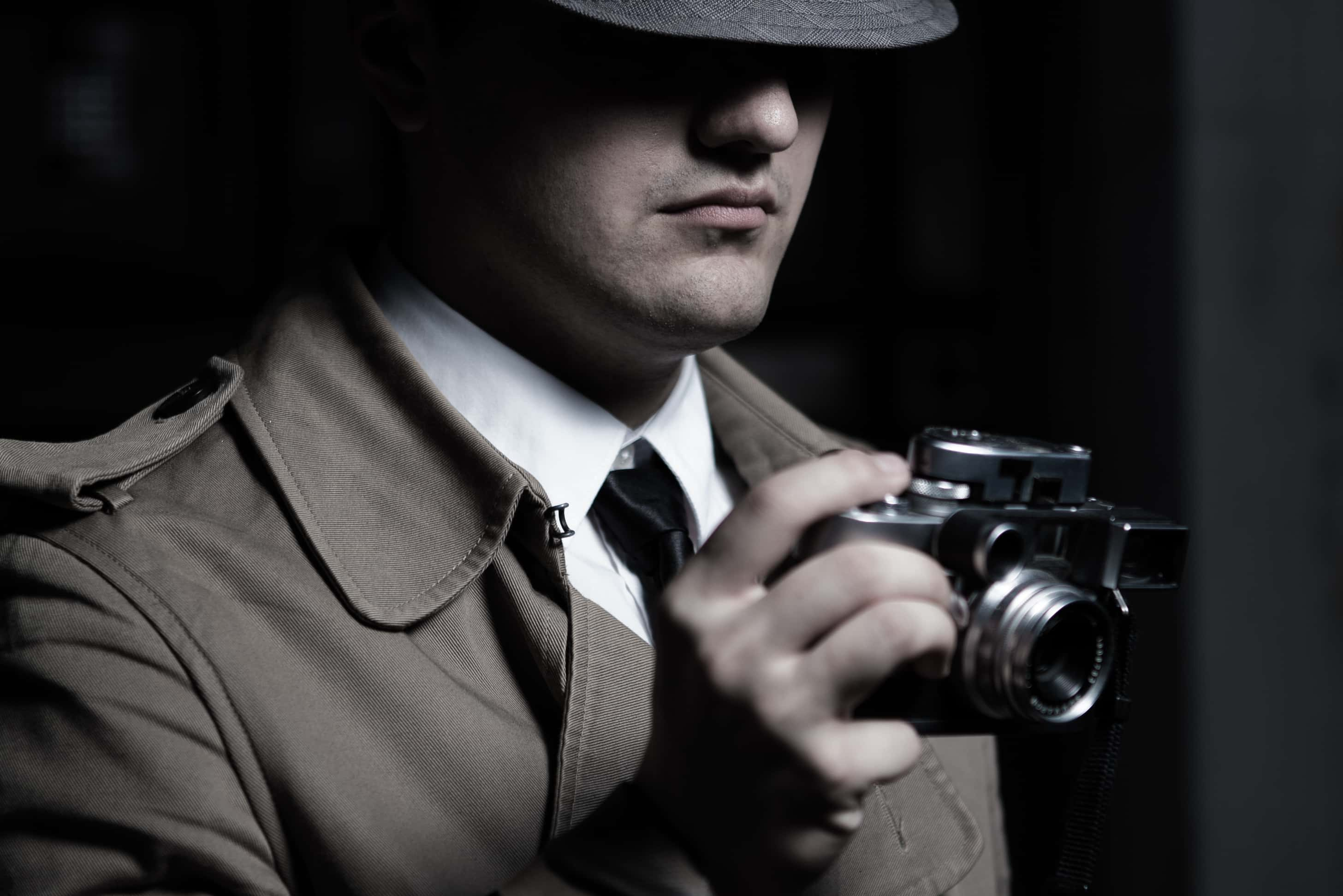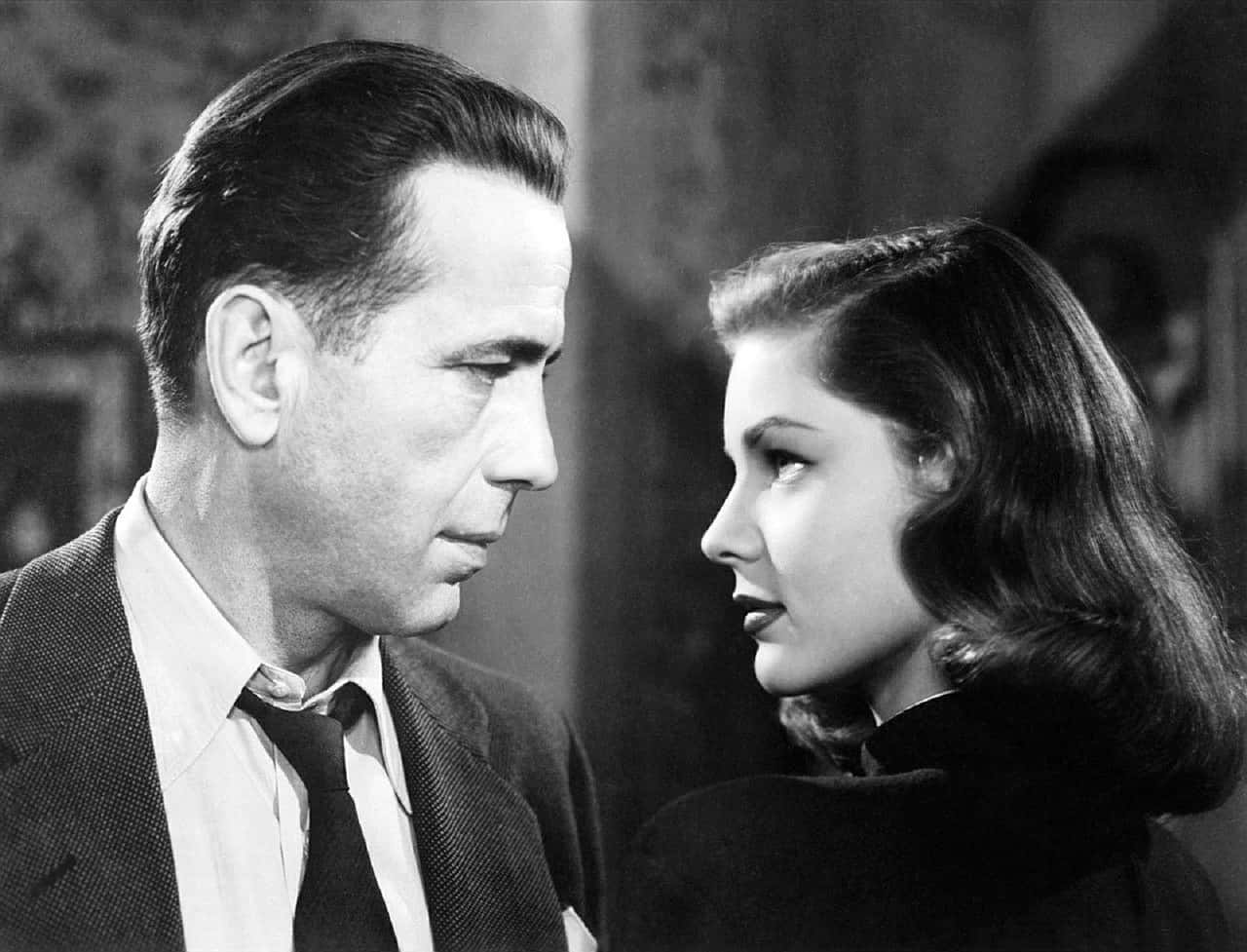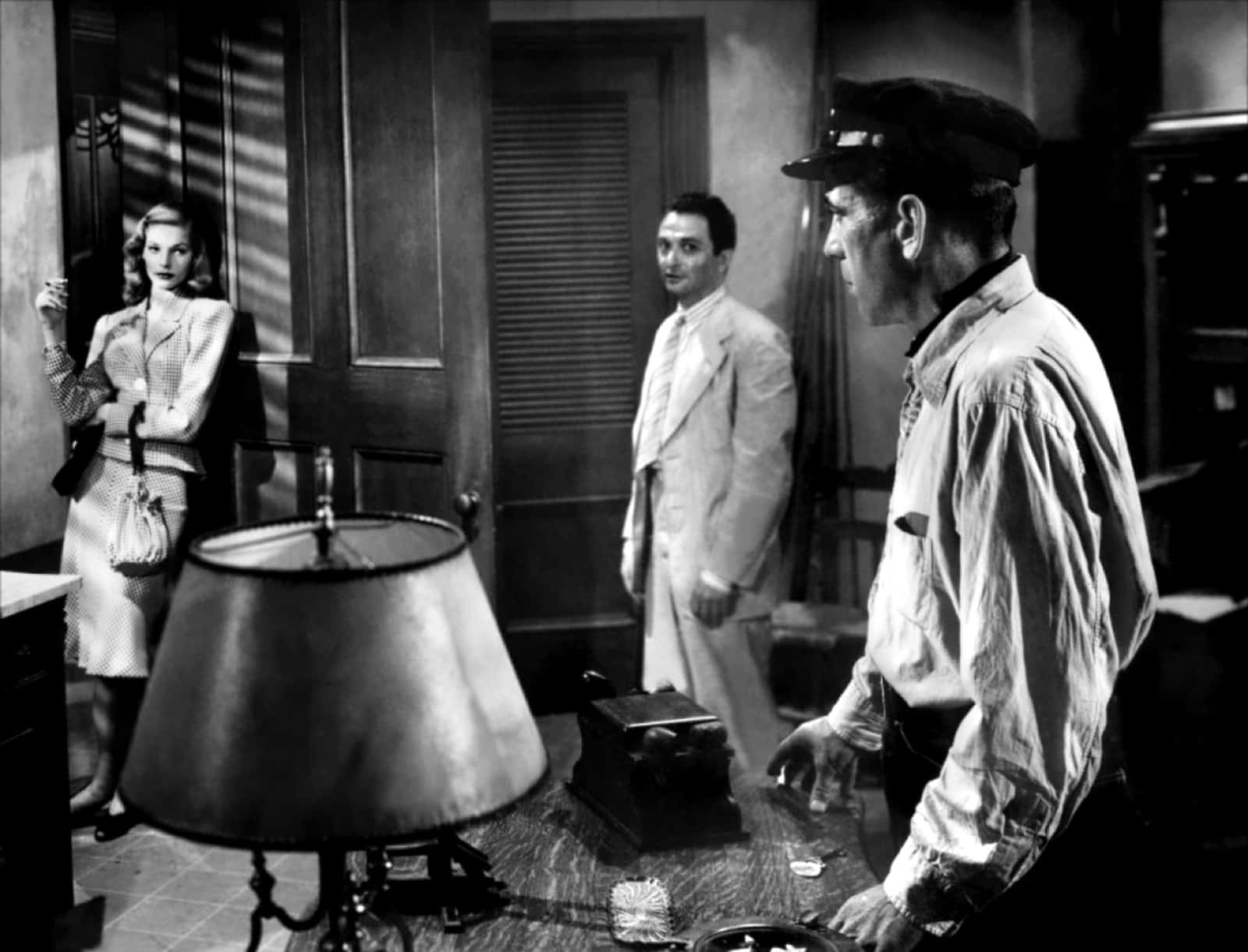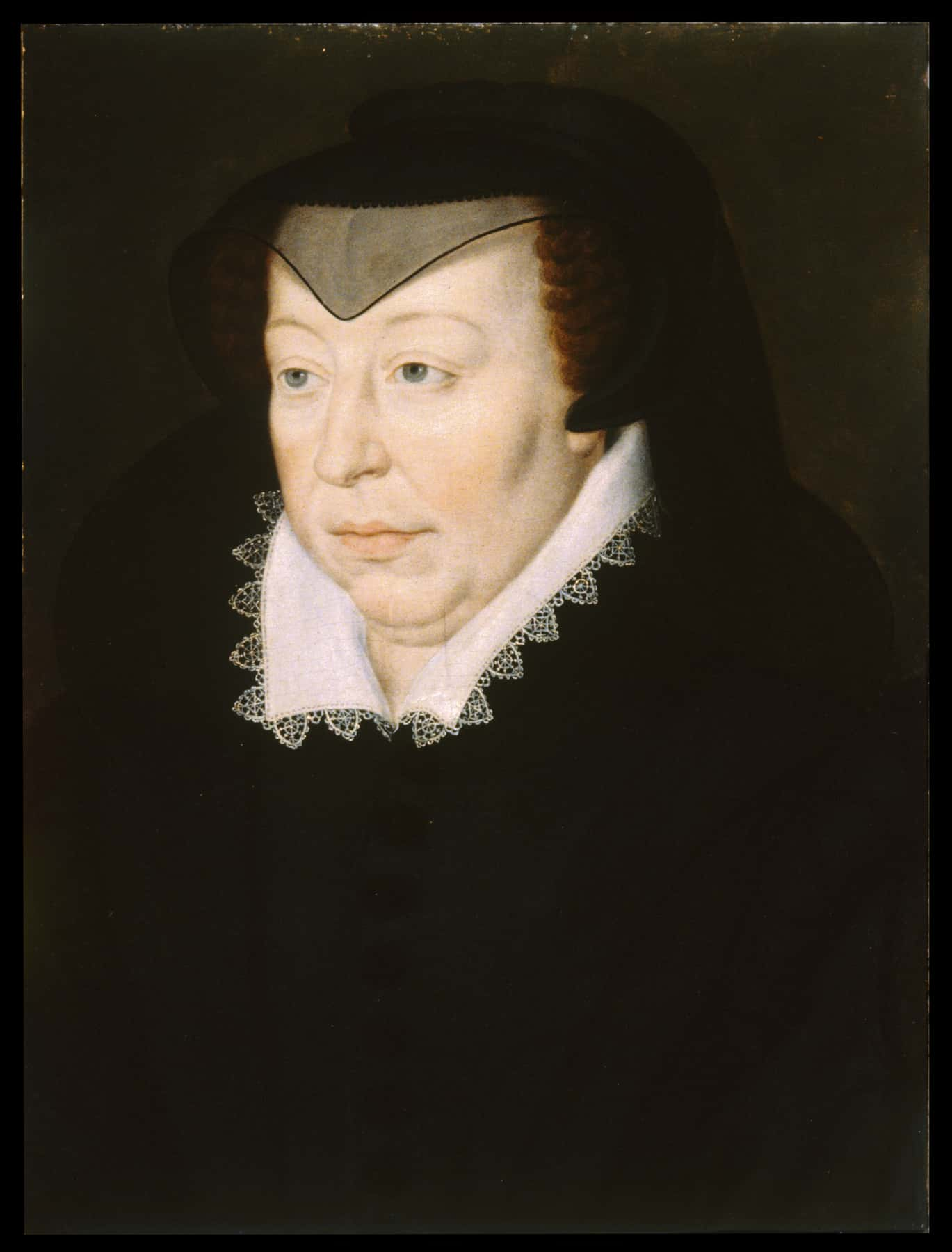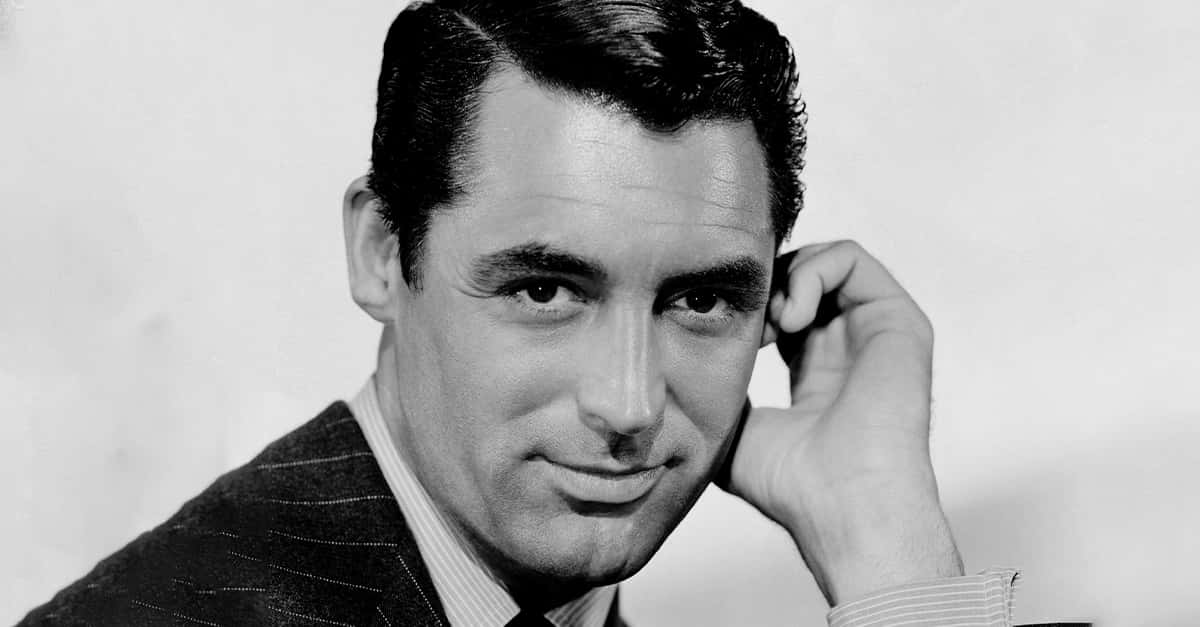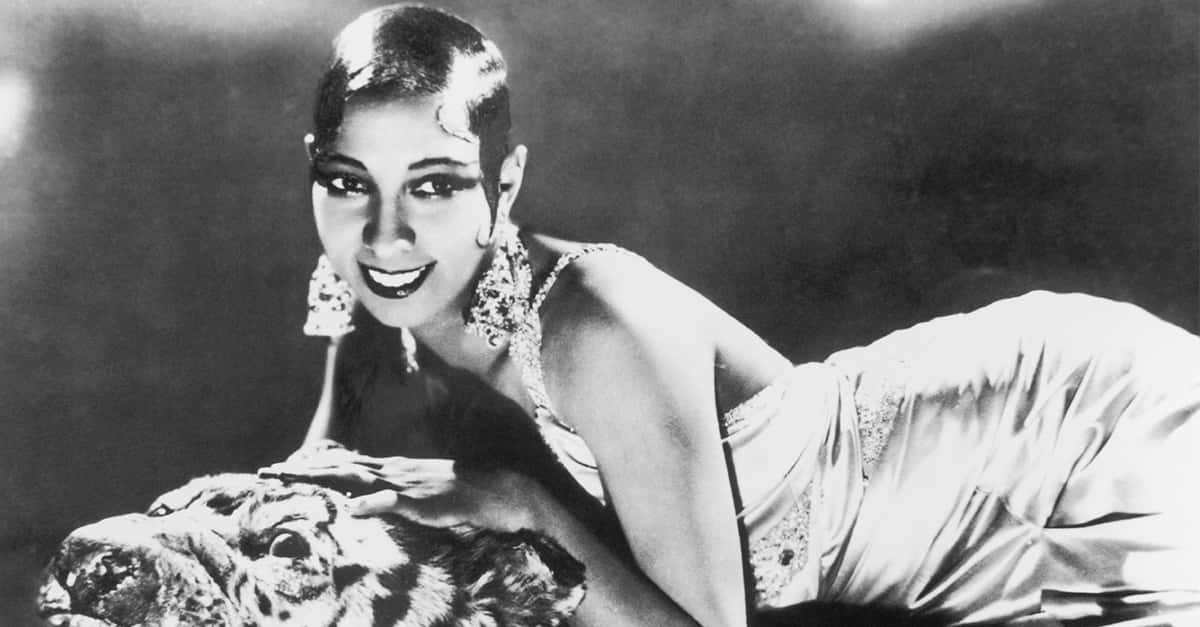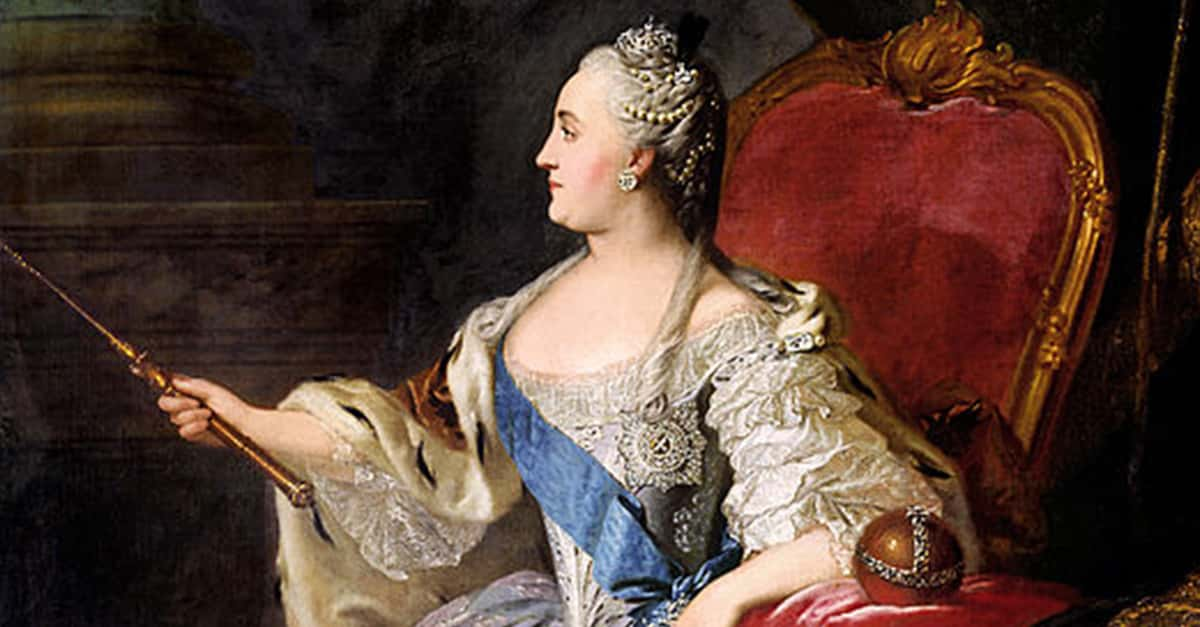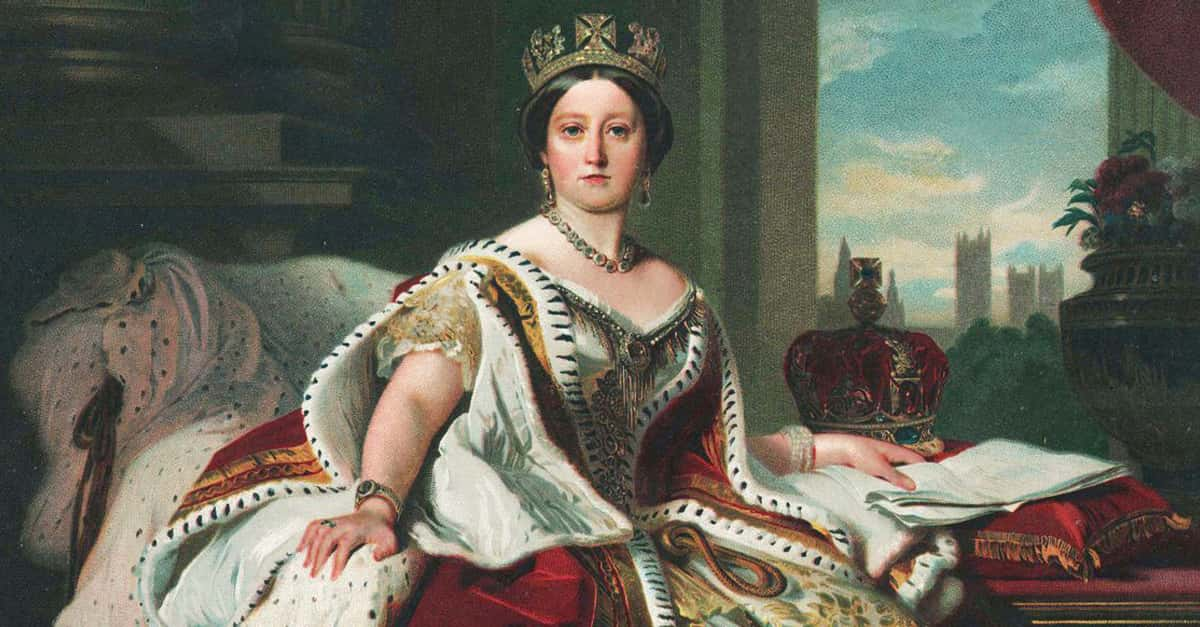No one combined sophistication with menace like Humphrey Bogart. His smart-mouthed, brooding tough guy characters came to define the film noir era, and his marriage to frequent co-star Lauren Bacall showed the public a softer side of the Hollywood heavy. Since his passing in 1957, he has been impersonated, parodied, and caricatured, but never replaced. Here’s looking at you, kid, and here are 42 iconic facts about Humphrey Bogart.
1. A Christmas Story
Humphrey Bogart was born on Christmas Day, 1899, in New York City. For years, an urban legend claimed that Bogart’s real birthday was January 23, 1899, and that the Christmas birthday was a studio invention for…reasons? However, Bogart always recorded his birthday as the 25th of December, and birth announcements in the January 10, 1900 edition of the Ontario County Times corroborate that he was, in fact, born on Christmas Day.
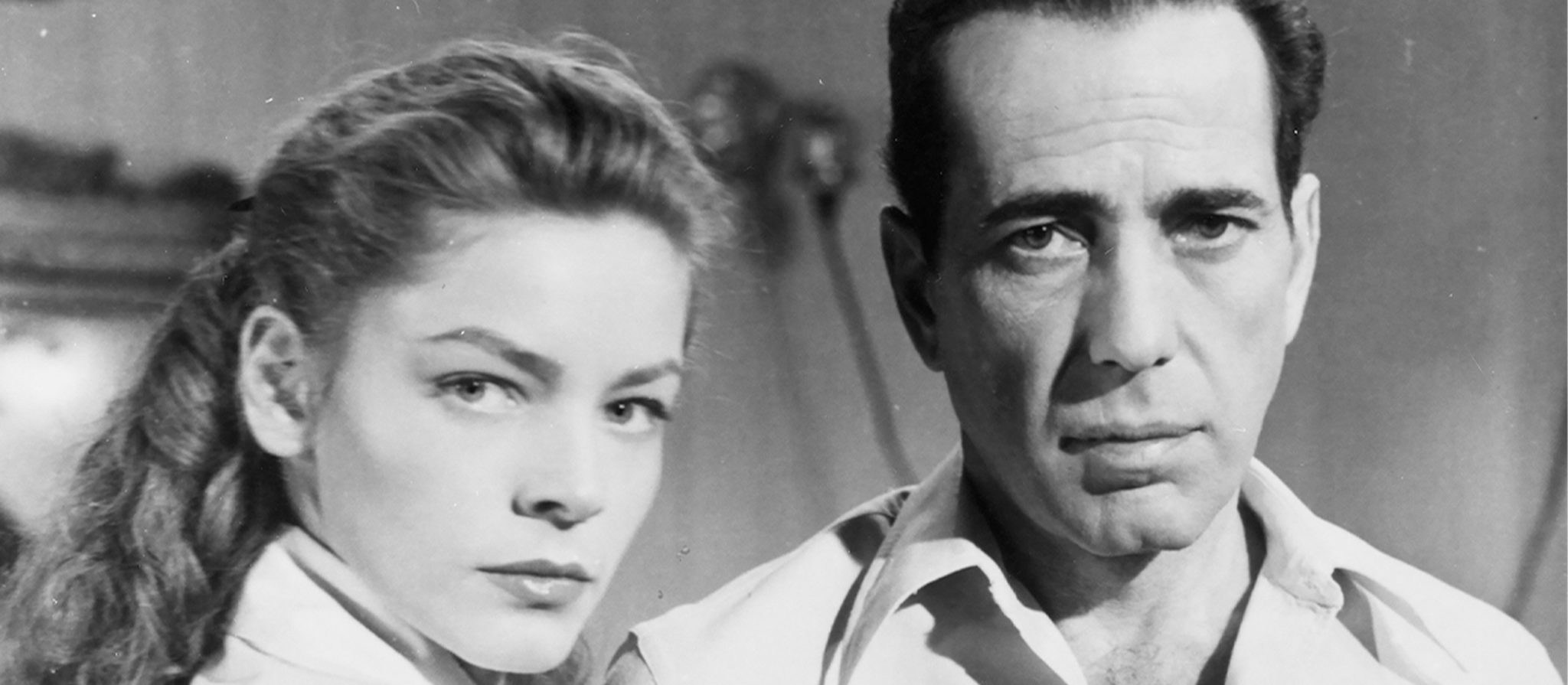
2. Privilege
Bogart grew up in an affluent home in New York City. His father, Belmont DeForest Bogart, was a highly regarded cardiovascular surgeon. His mother, Maud Humphrey, was a feminist activist and popular magazine illustrator whose family had come to America on the Mayflower.
3. Practically Royalty
Bogart and Princess Diana are related through American colonialist Thomas Woodford, one of Maud Humphrey’s ancestors. This makes Bogart and Diana ninth cousins, once removed.
4. False Advertising
Maud was incredibly successful as an illustrator; at times she made more than twice as much money as her surgeon husband. (Another) urban legend states that it was she who created the image of the Gerber baby, basing the character on her infant son, Humphrey.
5. You Look Familiar
Sadly, Humphrey Bogart was not the original Gerber baby, but there may be some truth to the myth. Maud Humphrey didn’t draw the first Gerber baby, but she did create a similar character, the baby spokesman of Gerber competitor Mellin. The Mellin baby was likely based on the infant Humphrey Bogart.
6. Friends In High Places
Bogart’s father was friends with William A. Brady, a successful Broadway producer. After failed attempts at writing, directing, and producing for Brady’s company, Bogart finally took a shot at acting, appearing as a Japanese butler in Alice Brady’s play, Drifting.
7. In The Navy
Bogart joined the Navy during WWI, serving aboard the USS Leviathan. His time in the Navy instilled in Bogart a passion for sailing that he pursued until the very end. At one point, he even offered his own yacht, Santana, as a reserve vessel for the US Coast Guard.
8. Lipping Off
It was while serving in the navy that Bogart received the distinct scar on his lip. He was escorting a prisoner to a naval prison in Maine when the prisoner struck Bogart in the face with the heavy shackles.
9. Another Side Of The Story
That’s one version of the story anyway. Bogart also claimed to have gotten his scar in an unspecified childhood accident.

History's most fascinating stories and darkest secrets, delivered to your inbox daily.
10. Loose Lisps Sink Ships
Though many associate Bogart’s scar with his characteristic lisp, Bogart’s son, Stephen, has a similar impediment, which suggests it might be at least partly genetic. Whatever the cause, the lisp nearly cost Bogart his career—Jack Warner (yes, one of the Warner Brothers) hesitated to cast Bogart in major roles because of it.
11. Where There’s Smoke, You’re Fired
Warner also hated Bogart’s smoking. During the filming of The Maltese Falcon, Bogart and his co-star Peter Lorre made it a point to smoke in as many scenes as possible just to annoy Warner. They only stopped when Warner threatened to fire them.
12. I Hate My Boss
Bogart’s relationship with Warner could only be described as tense. Filming on The Maltese Falcon initially had to wait because Warner had suspended Bogart for refusing to appear in Bad Men of Missouri. It was only when the suspension was lifted that filming on the Falcon could start.
13. Butter Fingers
Two of the titular Maltese Falcon statues had to be made for the film. Bogart dropped the original, denting it beyond usability.
14. A Raft Of Bad Decisions
It’s hard to imagine the role of Sam Spade, the gritty detective in The Maltese Falcon, being played by anyone but Humphrey Bogart, but the studio originally wanted George Raft for the part. Raft declined, just as he had with High Sierra and Casablanca. The lead roles in all three films went to Bogart.
15. Sacrificing For The Children
Bogart wore a wig during the filming of The Treasure of the Sierra Madre. He had begun taking hormone shots in hopes of having a child with his wife, Lauren Bacall. The shots caused Bogart’s hair to fall out (a side effect he mitigated with Vitamin B shots), but he and Bacall would go on to have four children together.
16. Ringing Endorsement
Bogart didn’t mince words when criticizing his fellow Hollywood stars. John Wayne, Katherine Hepburn, and even Laurence Olivier all found themselves on the wrong end of Bogart’s acidic tongue. But there was one actor whom Bogart held in esteem: Marlon Brando, of whom he said: "He’ll be doing Hamlet when we’re all selling potatoes".
17. Smart Thinking, Eh?
Bogart would also star in Huston’s 1951 film The African Queen. Bogart’s character was supposed to be a Cockney Englishman, but he couldn’t do the accent, so the character became a Canadian.
18. He Who Drinks Last…
The African Queen co-starred Katherine Hepburn. The prim and dignified Hepburn made very clear her disapproval of Bogart’s drinking. In his words: "she lectured the [heck] out of me on temperance and the evils of drink". To illustrate proper behavior, Hepburn insisted on drinking nothing but water—and was quickly stricken with dysentery. In fact, the nearly the entire crew fell sick, except for Huston and Bogart, who preferred whiskey to the tainted bottled water.
19. Silent Film
Bogart’s first film was 1930’s Broadway’s Like That, a short film in which he plays a would-be bigamist. The film, once considered lost, was rediscovered in 1963. Sadly, the soundtrack remains missing, leaving Bogart’s first onscreen performance a strangely silent experience.
20. Chip Off The Old Tooth
In 1953, while filming Beat the Devil, Bogart was involved in a serious car accident. Most of his teeth were knocked out in the crash, leaving him unable to record his lines. Luckily, director John Huston knew a young British actor on staff who could impersonate Bogart flawlessly. Peter Sellers wound up recording Bogart’s dialogue for the film.
21. I Just Can’t Beat The Devil!
The script for Beat the Devil was written by Truman Capote. Capote spent three days on set. On a lark, Bogart challenged Capote to an arm-wrestling match. Capote beat the movie star three times in a row.
22. Unpopular Opinion
Casablanca was Bogart’s most successful film, an iconic work of cinema that won the 1943 Oscar for Best Film and landed Bogart a Best Actor nomination. Orson Welles claims that, during the filming of Casablanca, Bogart called it the worst movie he’d ever made.
23. Luke, I Am Your Father
It is one of the most famous lines in cinema, but Rick Blaine never says "Play it again, Sam". He says "You played it for her, you can play it for me...If she can take it, I can take it, so Play it!"
24. Swede Nothings
During the filming of Casablanca, the Swedish press enthusiastically reported that Bogart was taking Swedish lessons from Bergman. The story was untrue. In reality, Bogart and Bergman hardly spoke, an attempt by both parties to keep the peace with Bogart’s extremely suspicious third wife, actress Mayo Methot.
25. Rats!
Frank Sinatra’s famous circle of friends, the Rat Pack, actually began as Humphrey Bogart’s drinking buddies. Bogart adopted the name when Lauren Bacall, in a failed attempt to scold the drunken crew, called them "a [darn] rat pack". Sinatra hated the name and hoped it would fall out of use with Bogart’s death, but no such luck.
26. Three Chairs For Bogart!
Bogart has a star on the Walk of Fame. He has appeared on stamps and has a street named after him in New York City, but his strangest accolade might be having a line of furniture named after him. In 2003, Thomasville Furniture unveiled their Humphrey Bogart Collection, meant to capture "the style and elegance of one of Hollywood’s most romantic legends".
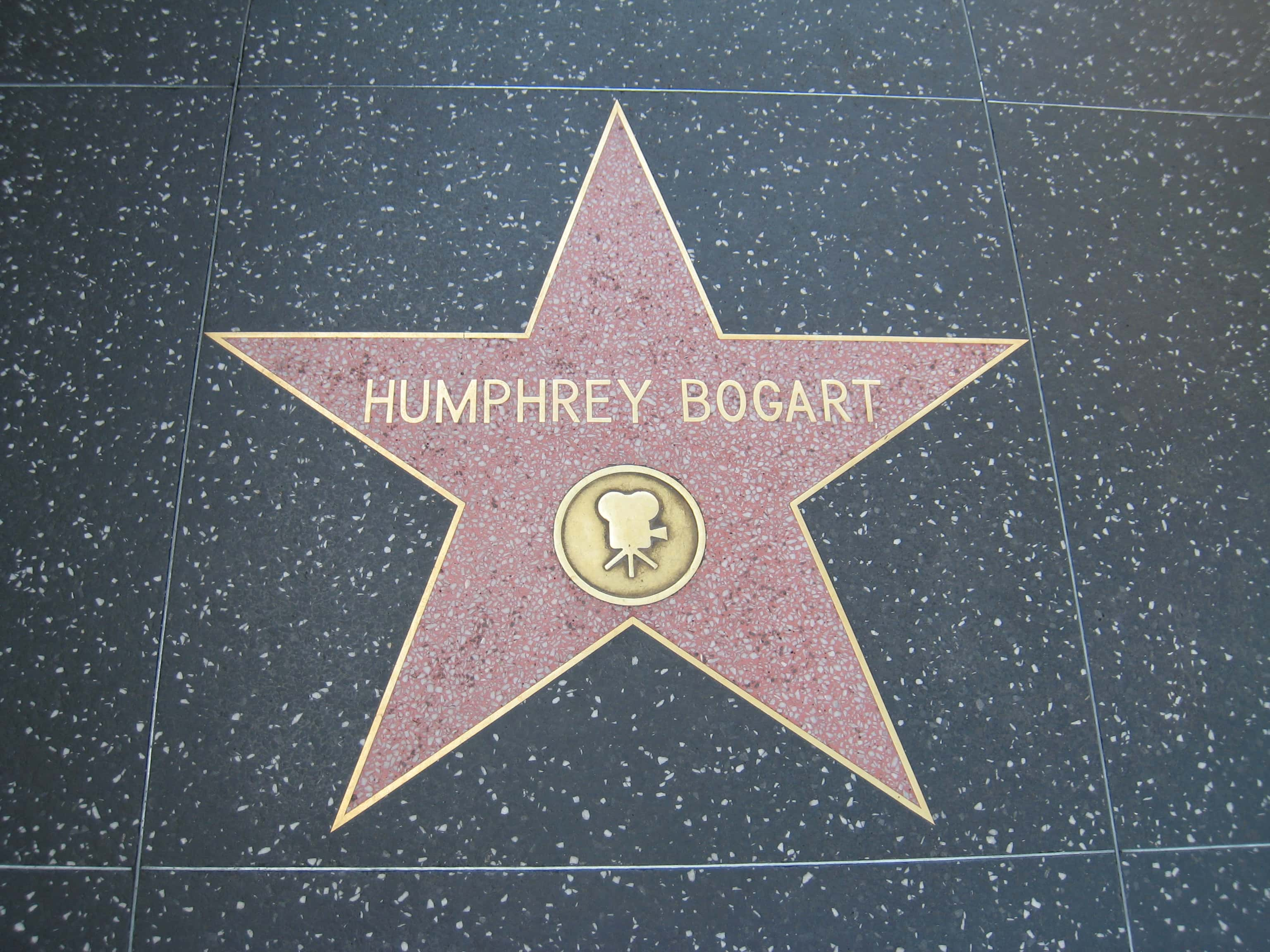 Wikimedia Commons, Tobias Kierk
Wikimedia Commons, Tobias Kierk
27. The Dad Chair
Actually, the furniture line was Stephen Bogart’s idea. He approached Thomasville with the idea after seeing an ad for the company’s Hemingway Collection.
28. Play It Again, Sam
Bogart and Bacall are name-checked in Bertie Higgins’ soft-rock hit "Key Largo". In addition to sharing a name with one of Bogart and Bacall’s best-loved movies, the song also makes references to Casablanca. Bacall, of course, did not appear in Casablanca.
29. Love Sick
First described in 1988, Bogart-Bacall Syndrome is an ailment which effects singers, voice actors, and speakers. Fatigue on the vocal cords leads to a hoarse or raspy voice which, coincidentally, makes men sound like Humphrey Bogart and women sound like Lauren Bacall.
30. On The Air
Bogart-Bacall Syndrome didn’t stop the couple from starring in their own radio show from 1951 to 1952. In Bold Venture, Bogart played Slate Shannon, a seafaring adventurer who, with his trusty sidekick (the Bacall-voiced Sailor Duval), fought pirates and hunted treasure around the Caribbean.
31. Big Softie
He usually played brooding tough guys on screen, but in real life, Bogart could be sensitive and soft-hearted. His second wife, actress Mary Phillips, once remarked: "Humphrey cries at card tricks".
32. Blue Christmas
There may be no better example of Bogart’s sensitivity than his unusual Christmas ritual. Every December 25th, he would gather his friends and family to watch the 1929 version of A Star Is Born. The movie never ended without Bogart excusing himself from the room in fits of tears.
33. Checkmate
In the 1920s and 30s, stores often employed professional chess players to challenge and entertain customers. An expert chess player in his own right, Bogart loved hustling these chess champions. He once beat 40 in a single day, netting $20 in the process. One store even tried to hire Bogart as their in-house chess champ, but Bogart declined—he made more money as a challenger.
34. The Long Game
Too old to enlist, Bogart spent World War II playing chess with the troops, painstakingly trading one move at a time via mail.
35. Cutting Back
Bogart smoked two packs of Chesterfield cigs a day. In January 1956, Bogart was diagnosed with esophageal cancer. Confronted with his own mortality, Bogart made a difficult decision and began using filtered smokes.
36. Lesson Learned?
Allegedly, Bogart’s last words were "I should have never switched from scotch to martinis".
37. Curtain Call
Bogart’s final role came in 1989, more than 30 years after his passing. Through a combination of film editing, body doubling, and digital wizardry, Bogart was able to appear in an episode of horror series Tales From The Crypt.
38. I Knew Your Mother
That episode, "You, Murderer," also starred Isabella Rossellini, daughter of Bogart’s Casablanca co-star, Ingrid Bergman.
39. Method Acting
The Treasure of the Sierra Madre was written and directed by John Huston, who had previously directed Bogart in The Maltese Falcon, Key Largo, and Across the Pacific. Huston and Bogart became good friends and enjoyed playing pranks on each other. In one scene, Bogart was supposed to reach under a rock, then draw back as if something had bitten him; Huston got a realistic reaction out of Bogart by hiding a loaded mousetrap under the rock.
40. Asking For Directions
Bogart’s temper and Mayo Methot’s jealousy made for a tempestuous relationship. Hollywood insiders referred to them as "the Battling Bogarts". Methot once hired a private investigator to follow Bogart. The PI found nothing amiss, but when Bogart discovered that he was being tailed, he called the investigation agency. "Hello, this is Humphrey Bogart," he allegedly announced, "you’ve got a man on my tail. Would you check with him and tell me where I am?"
41. Power Couple
Methot may have been right to be suspicious. Bogart began carrying on an affair with actress Lauren Bacall, and they were married immediately after Bogart and Methot divorced. Bogart was 20 years her senior, but he and Bacall proved to be one of Hollywood’s most celebrated couples on and offscreen.
42. To Have, And To Have Not
Not everyone appreciated the relationship, however. Bogart and Bacall met while filming To Have and To Have Not. The director of the film, Howard Hawks, had also fallen in love with the up-and-coming starlet, and did everything he could to sour her on Bogart. Hawks even threatened to ruin Bacall’s career if she didn’t end the relationship. It took the intervention of Jack Warner himself to end the fighting and get the movie made. Later, Hawks would comment about Bacall: "Bogie fell in love with the character she played, so she had to keep playing it the rest of her life".

